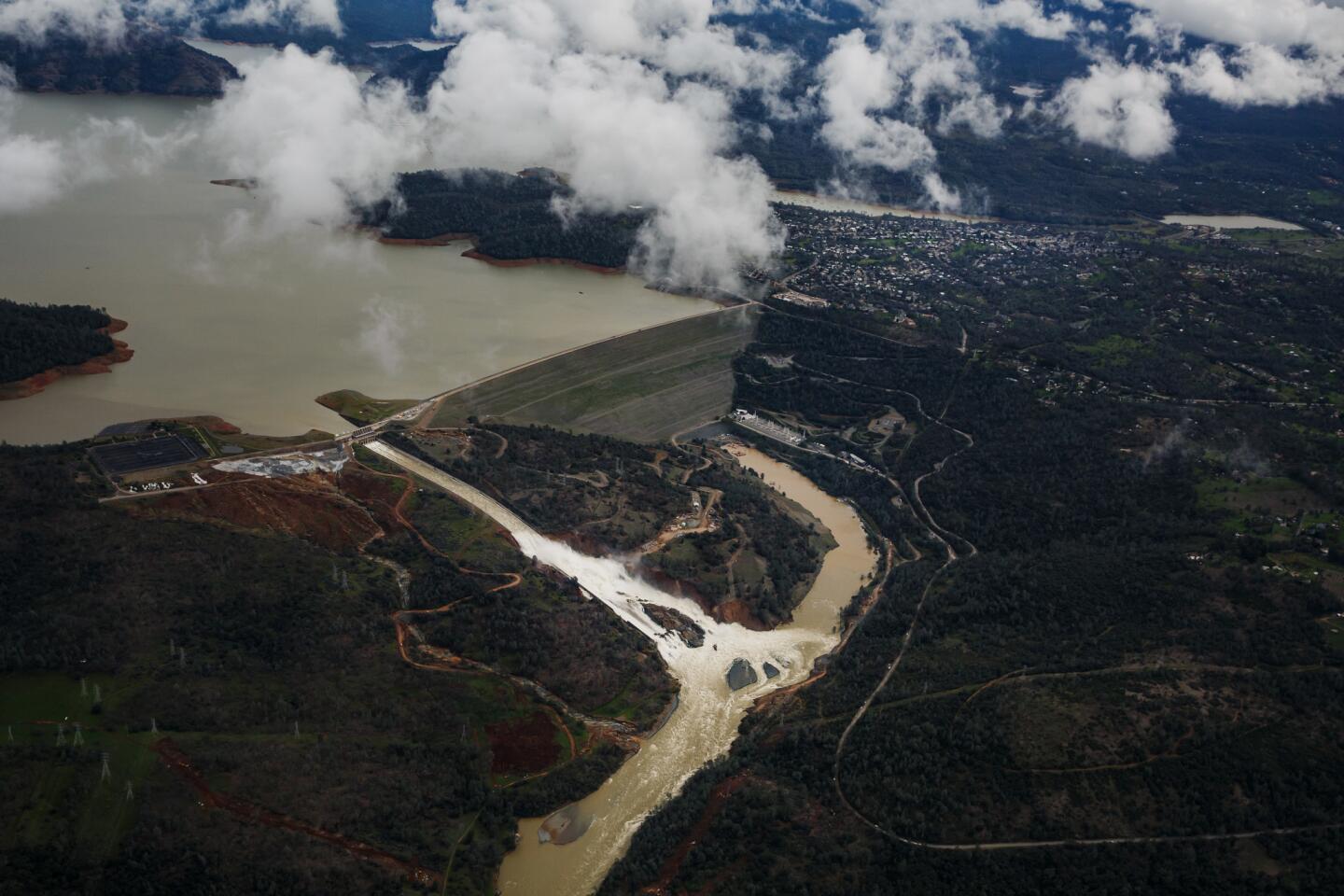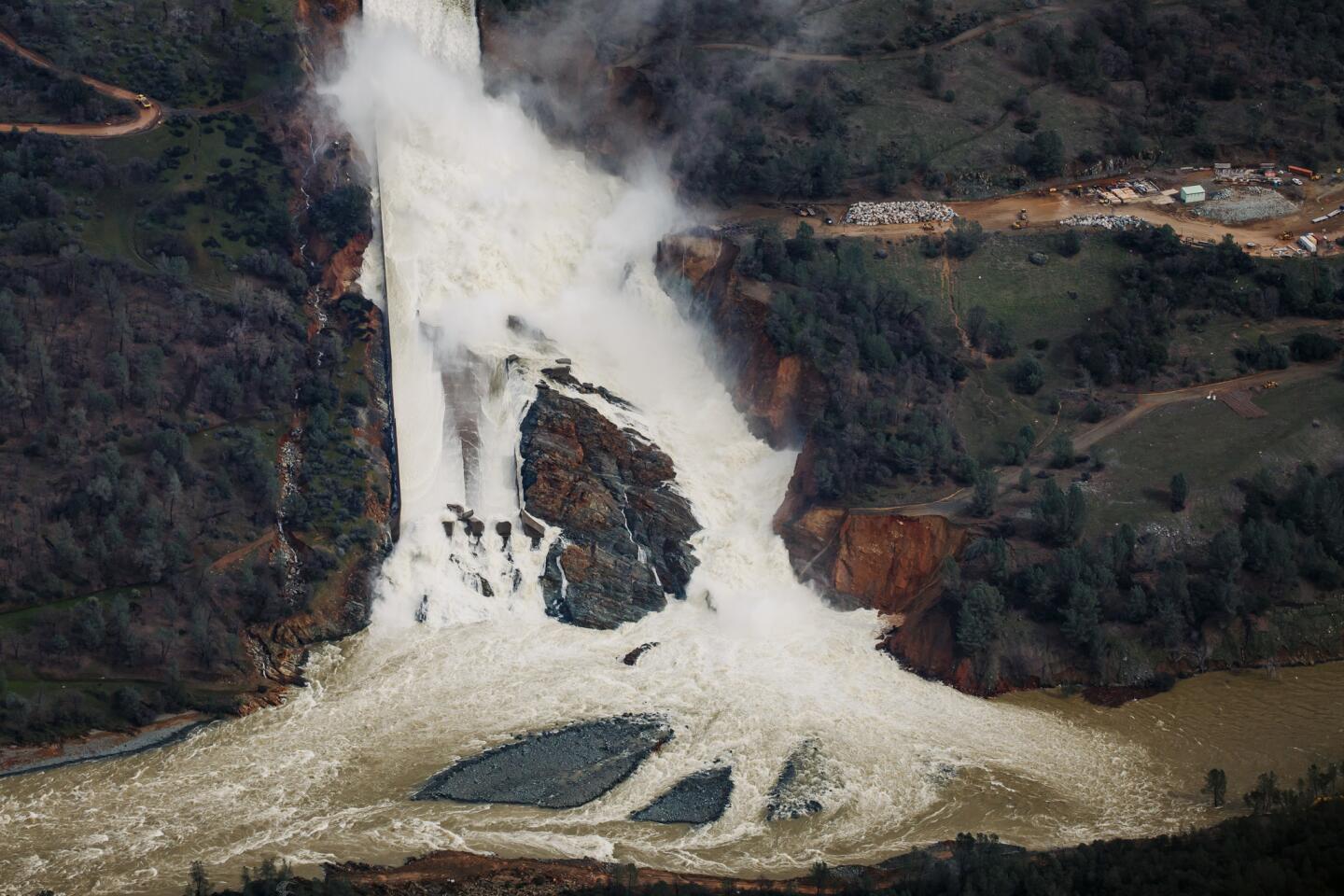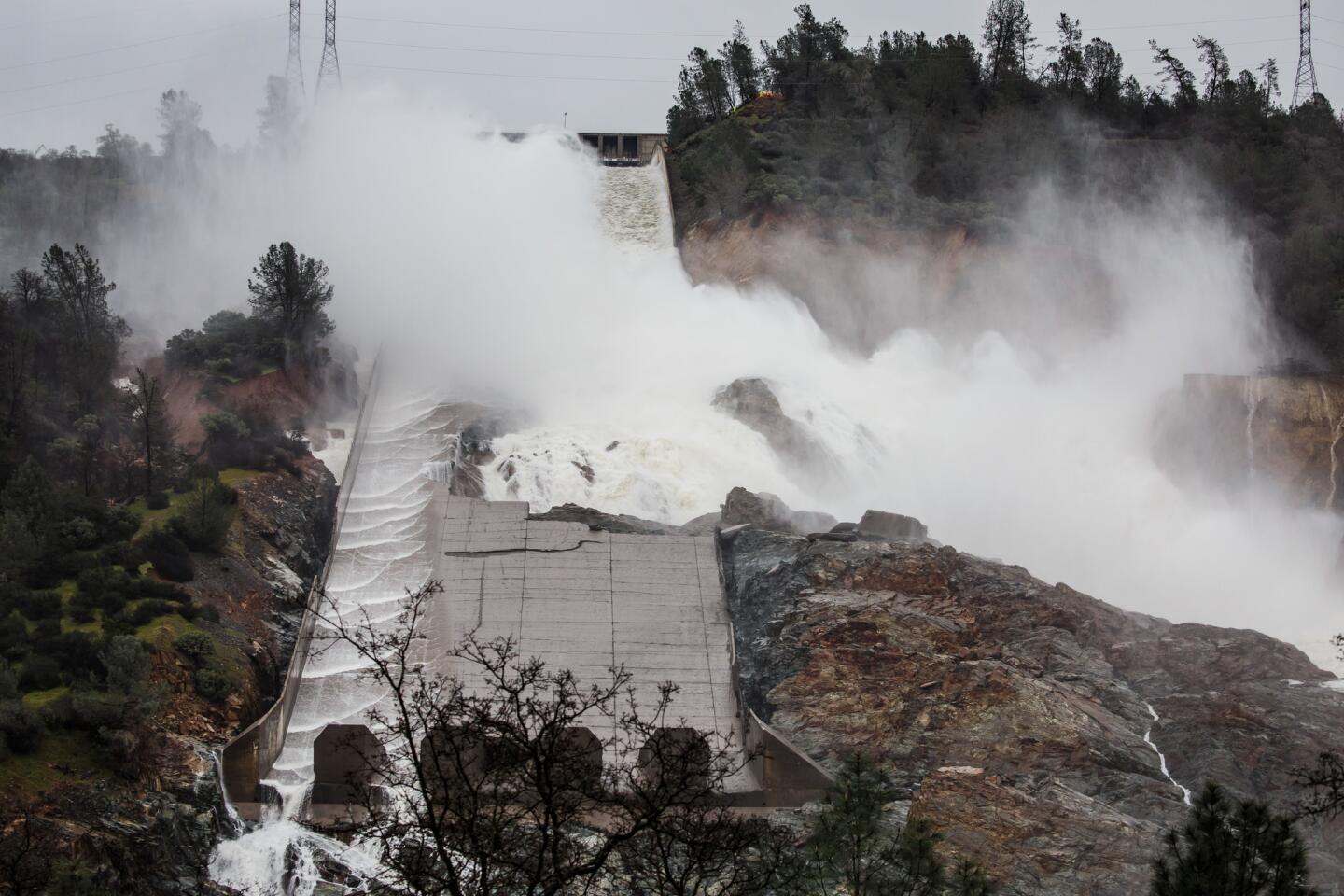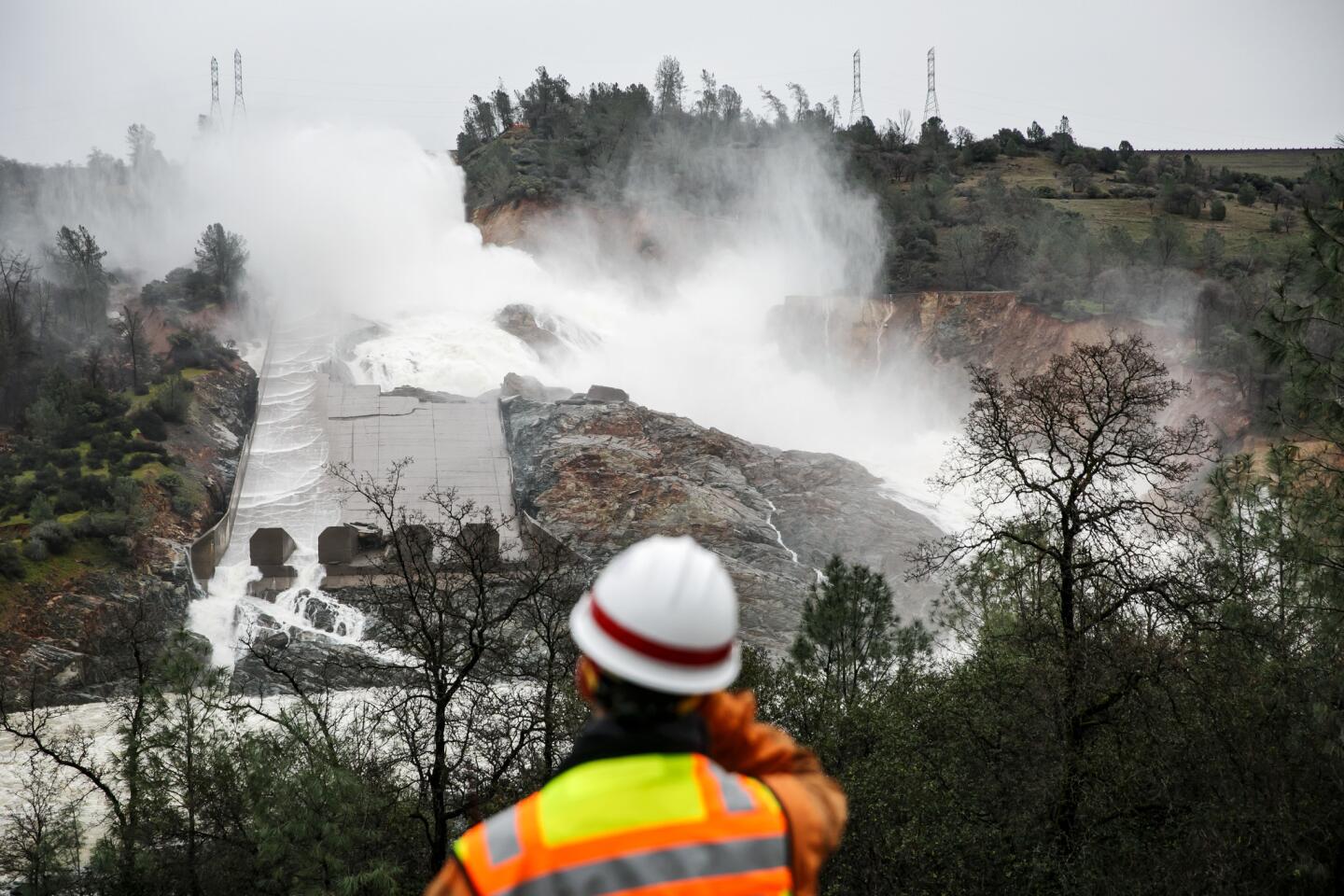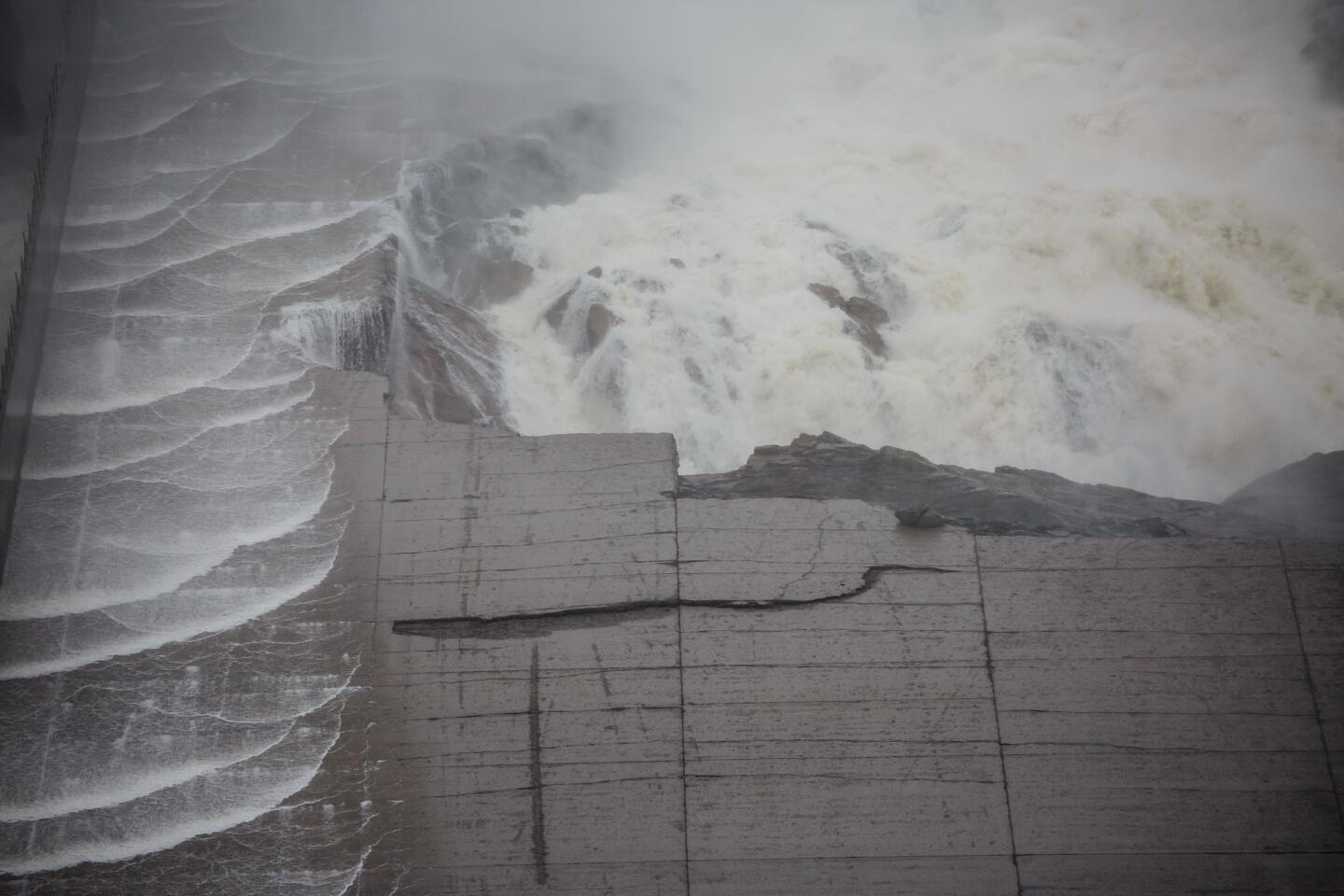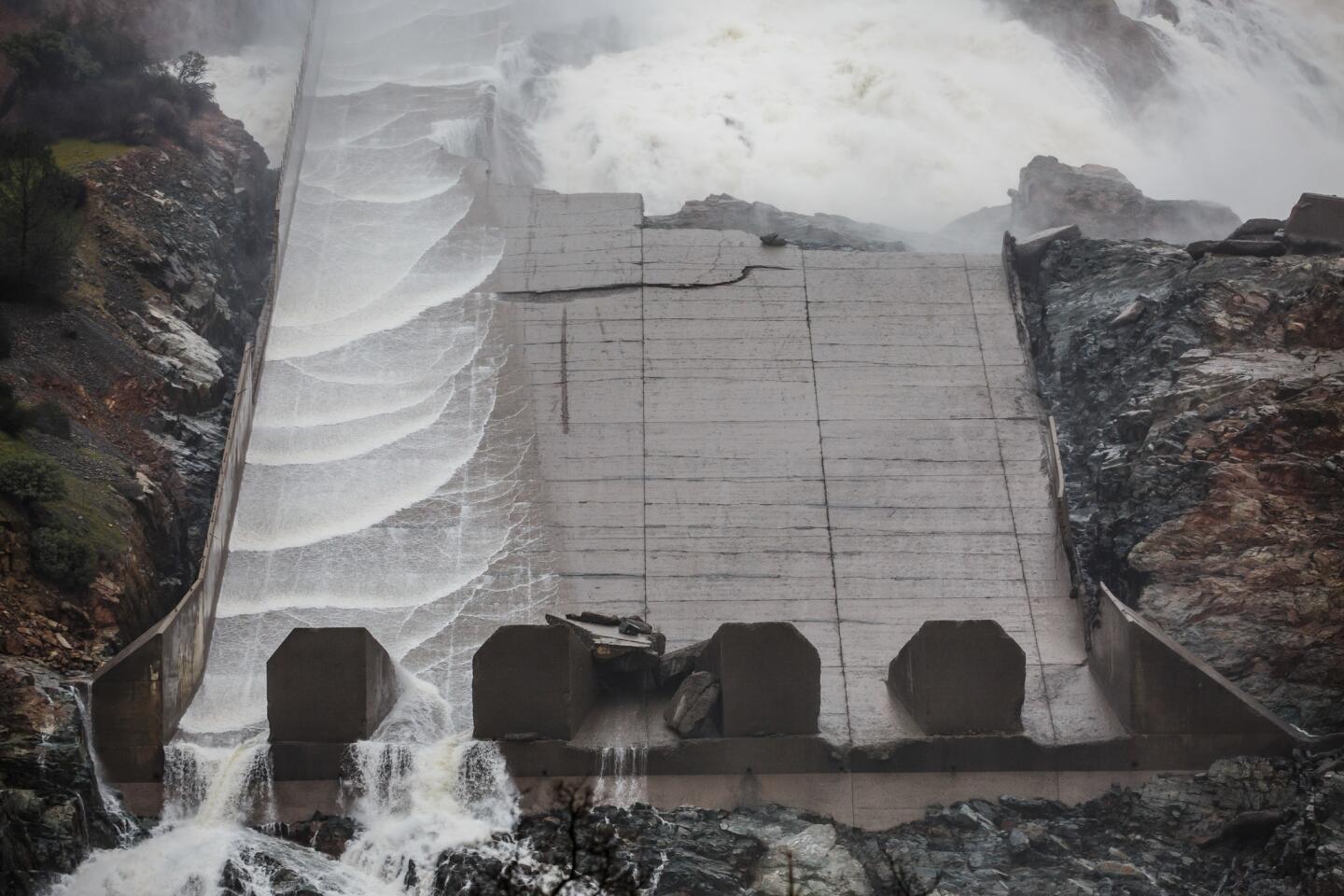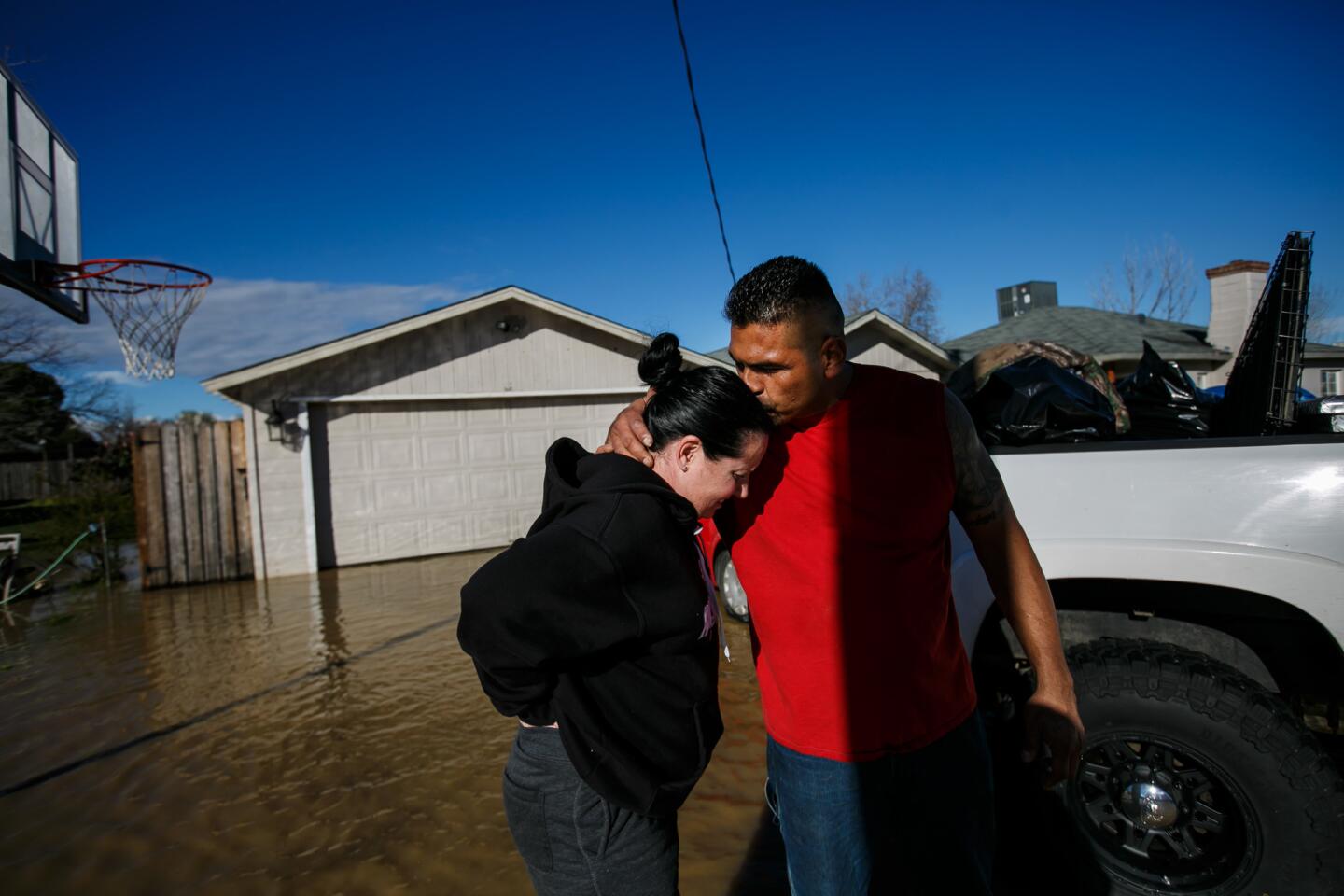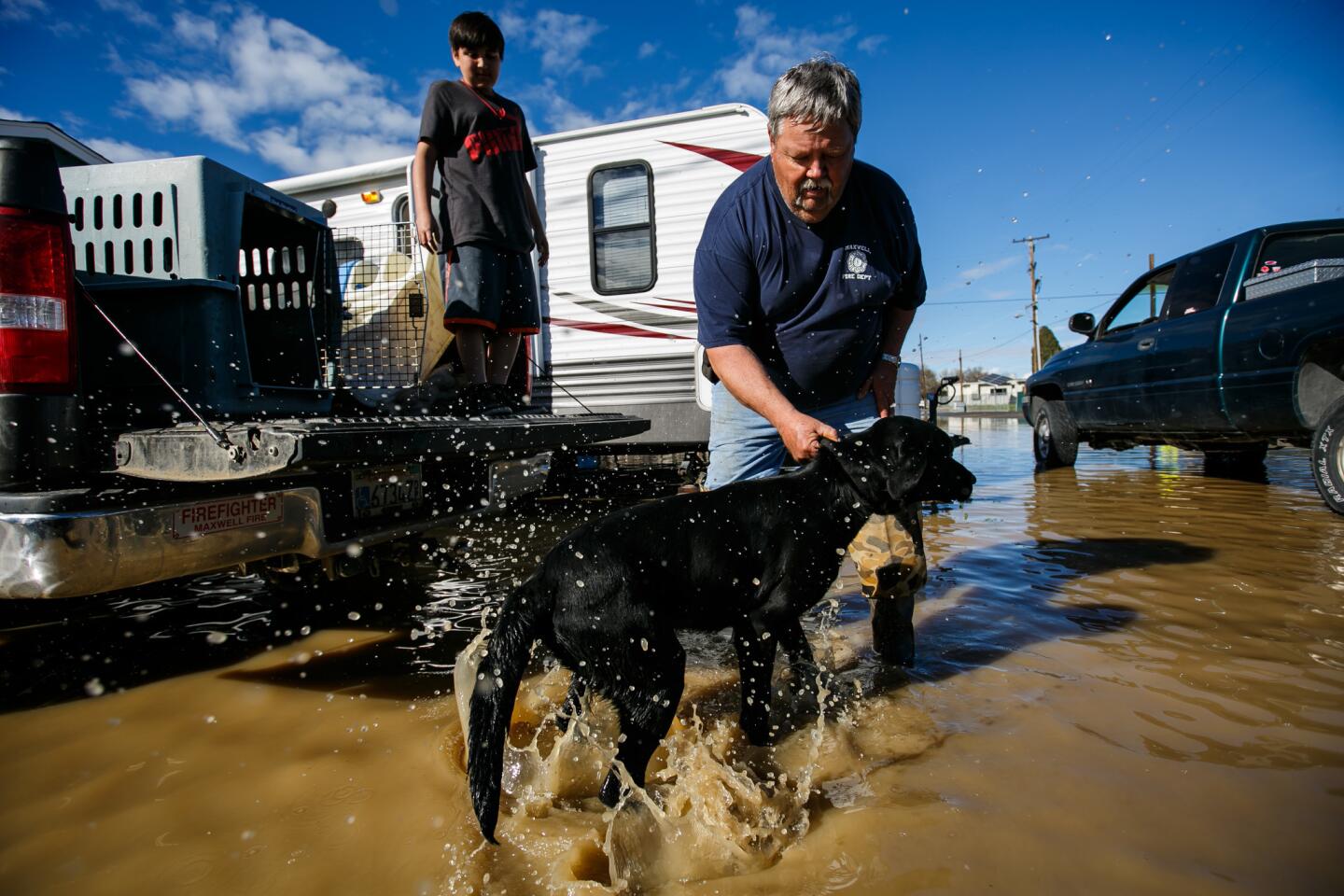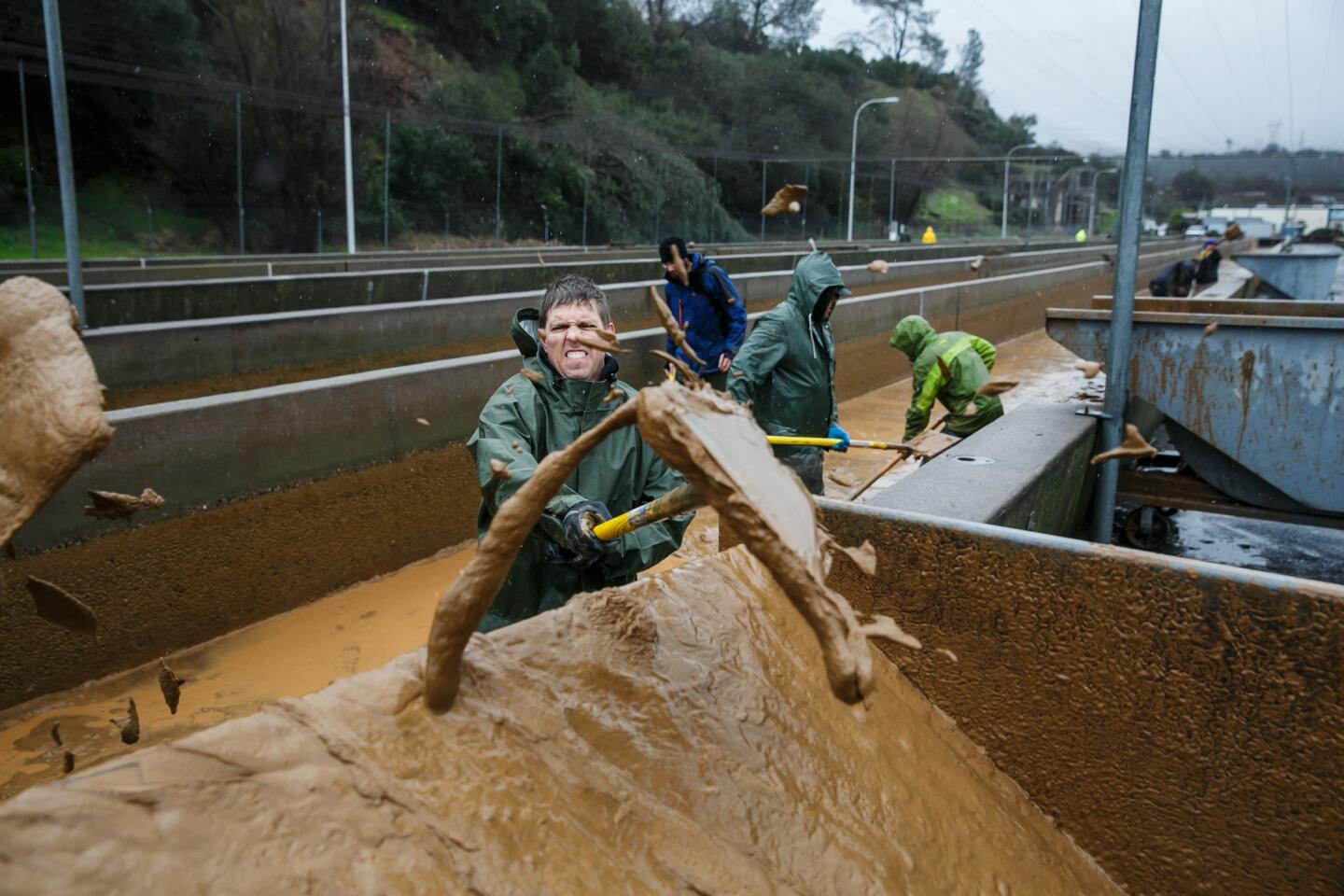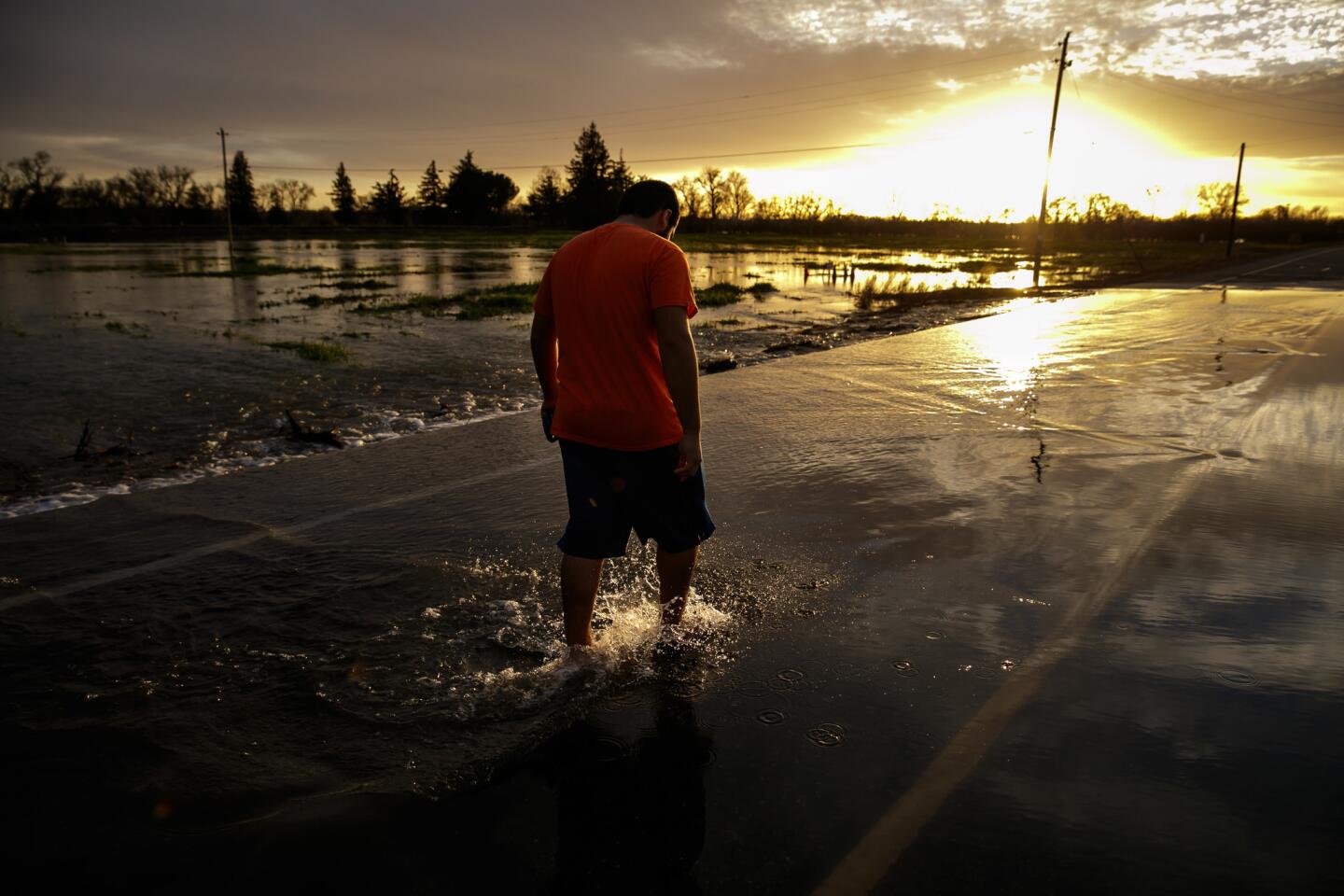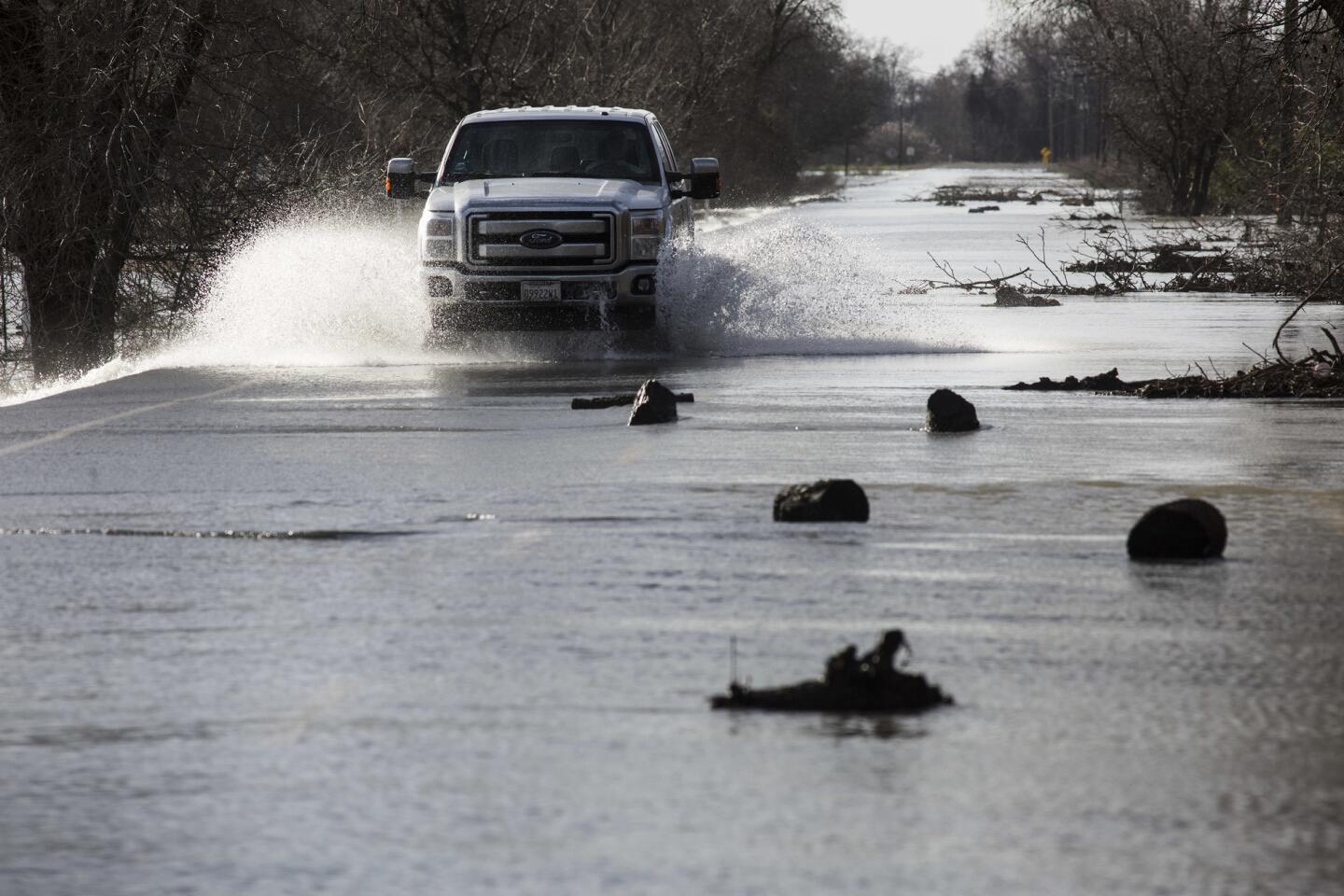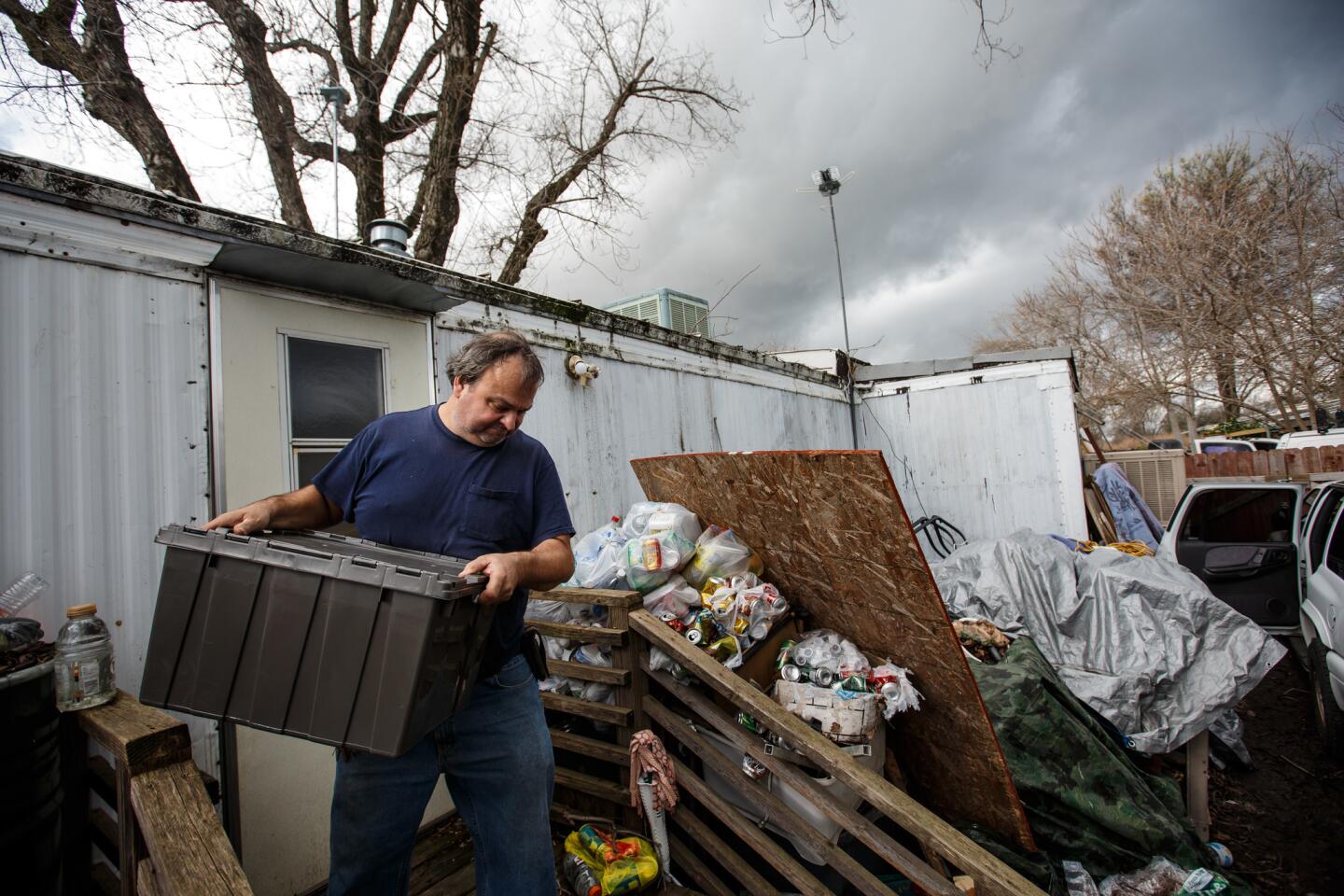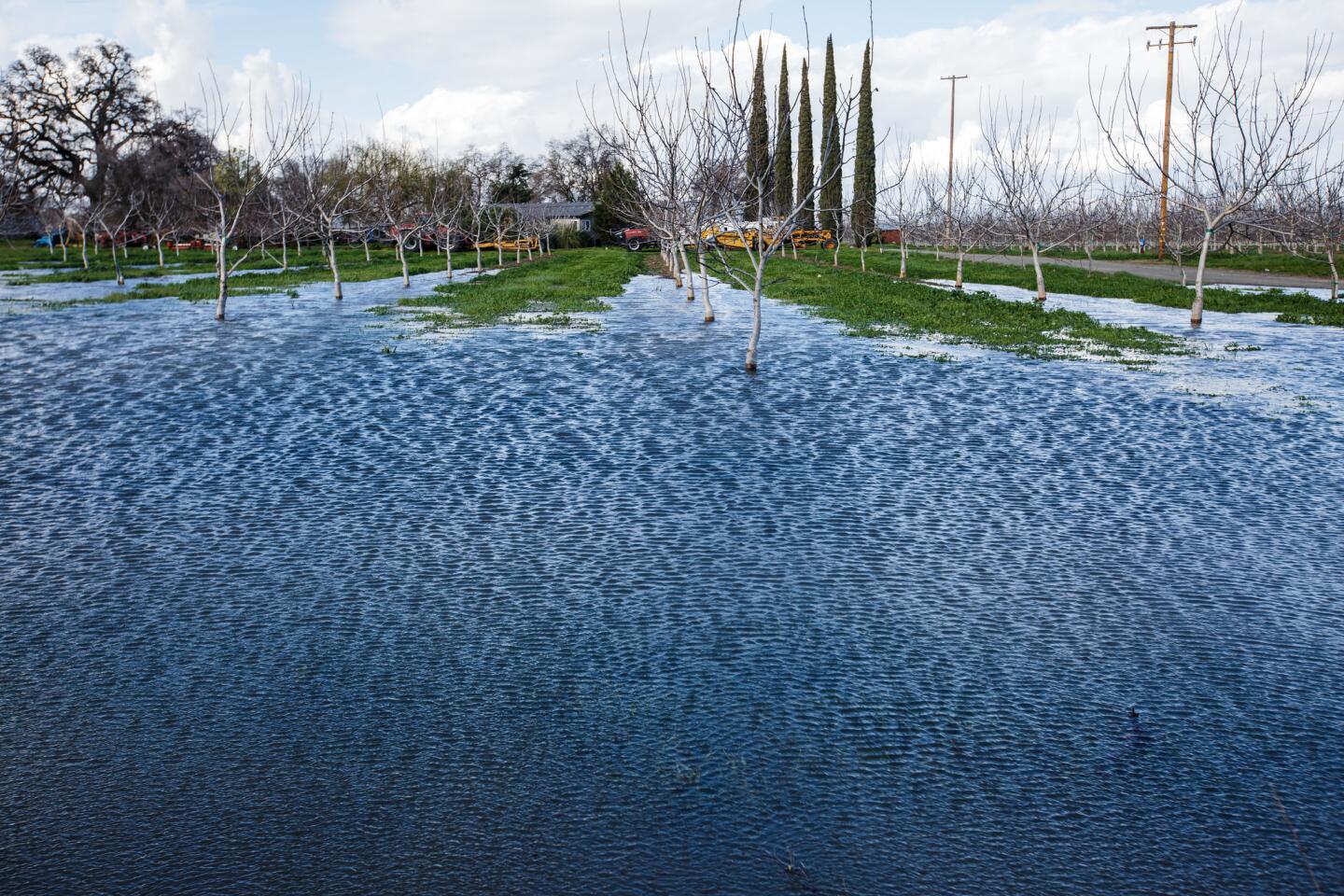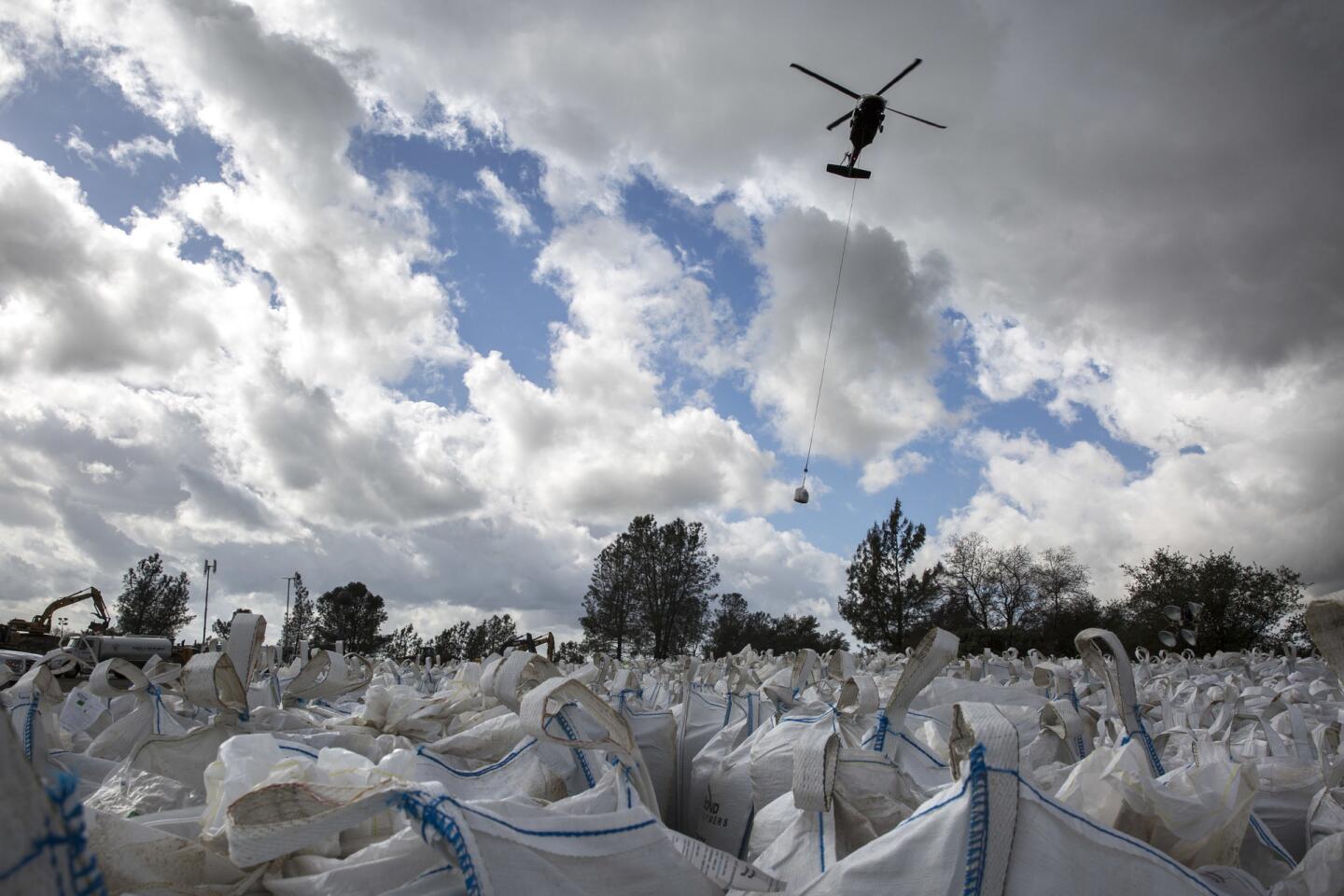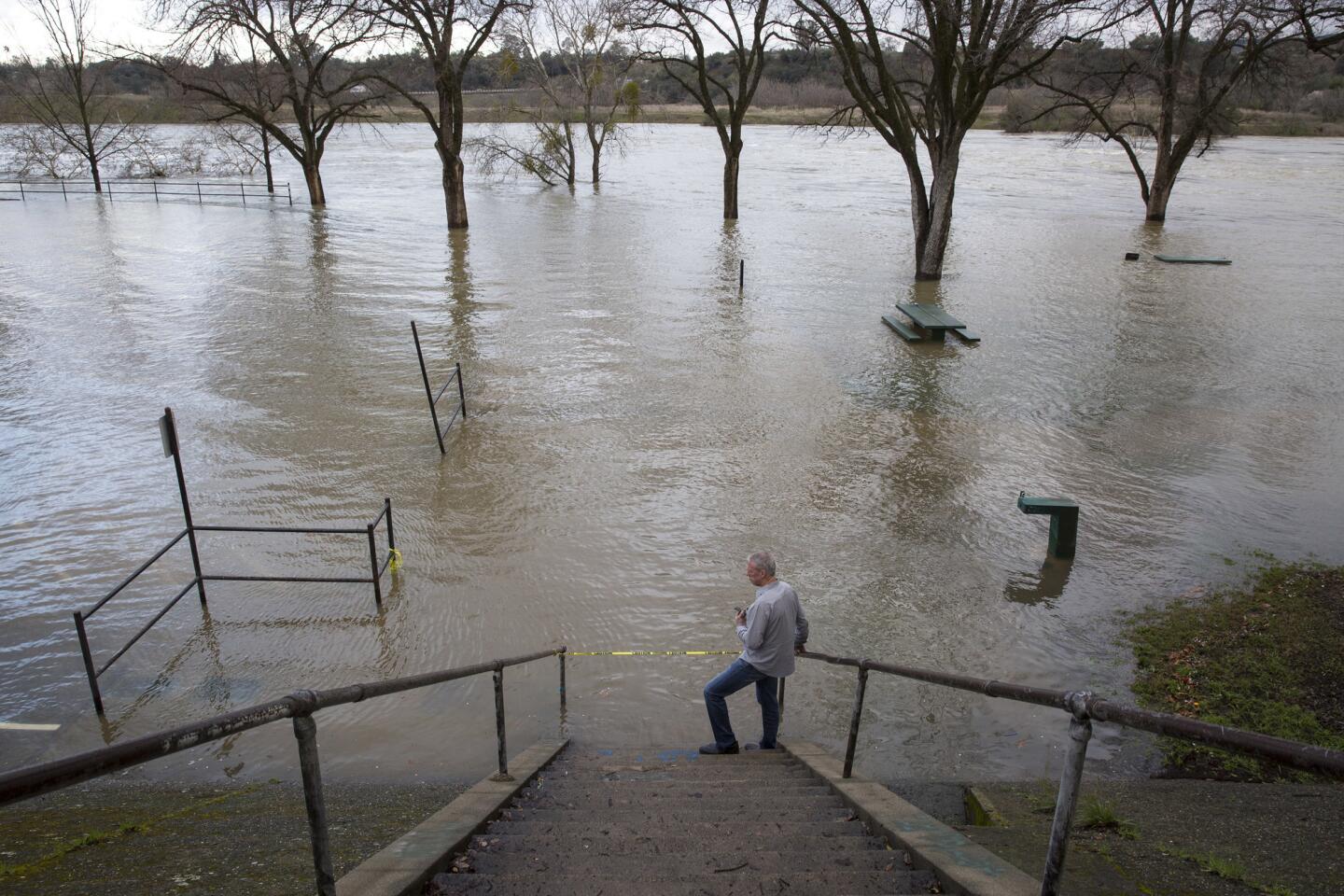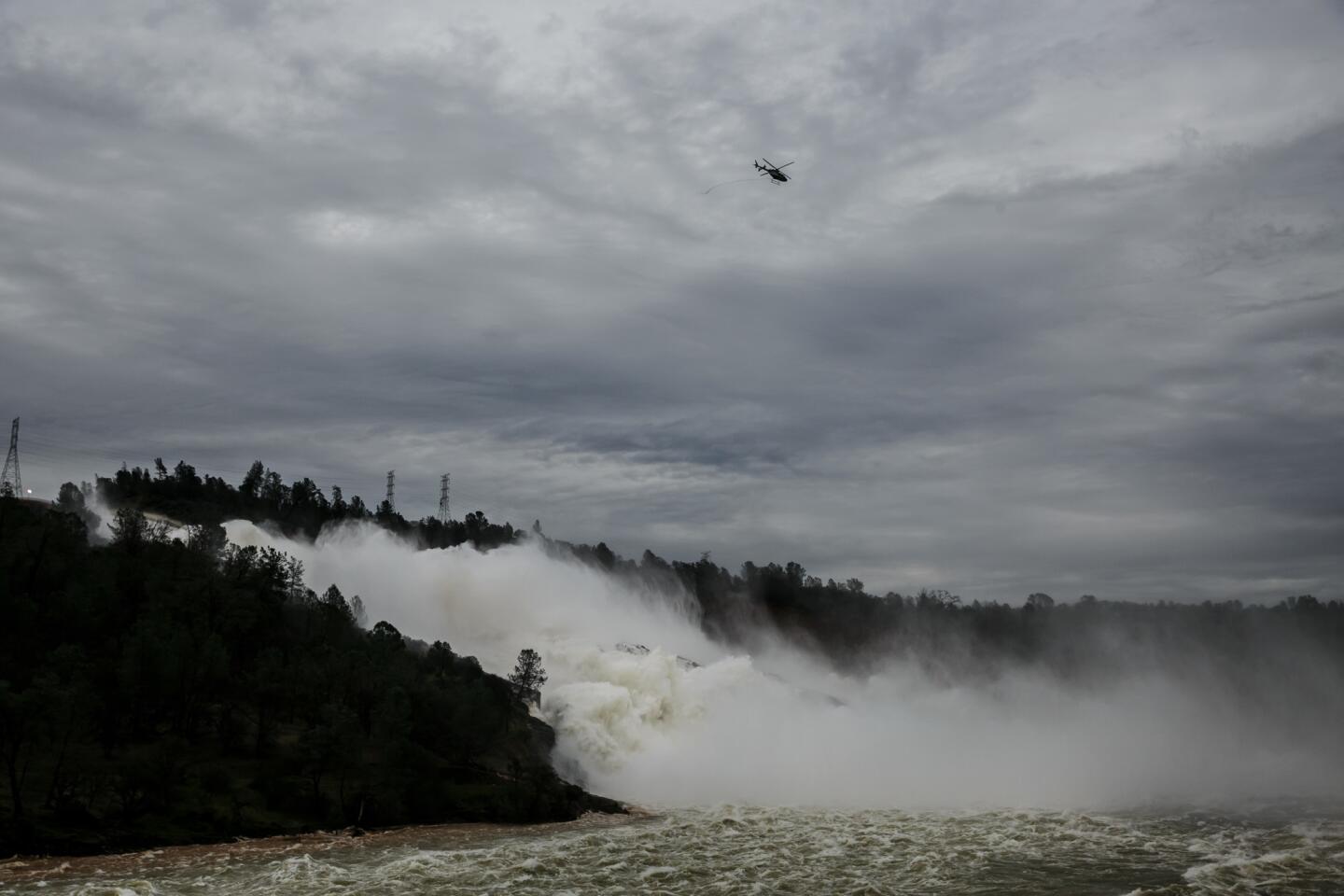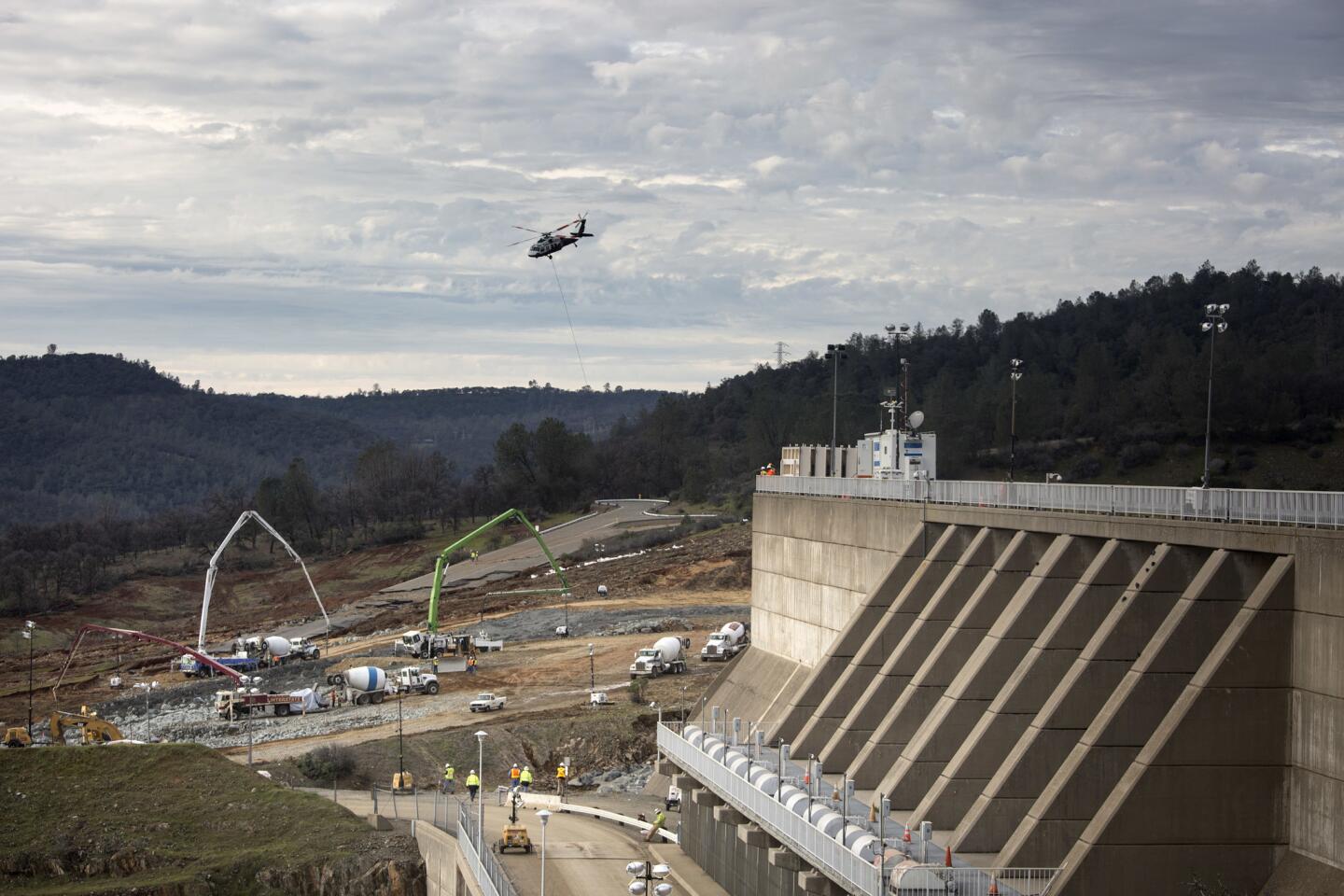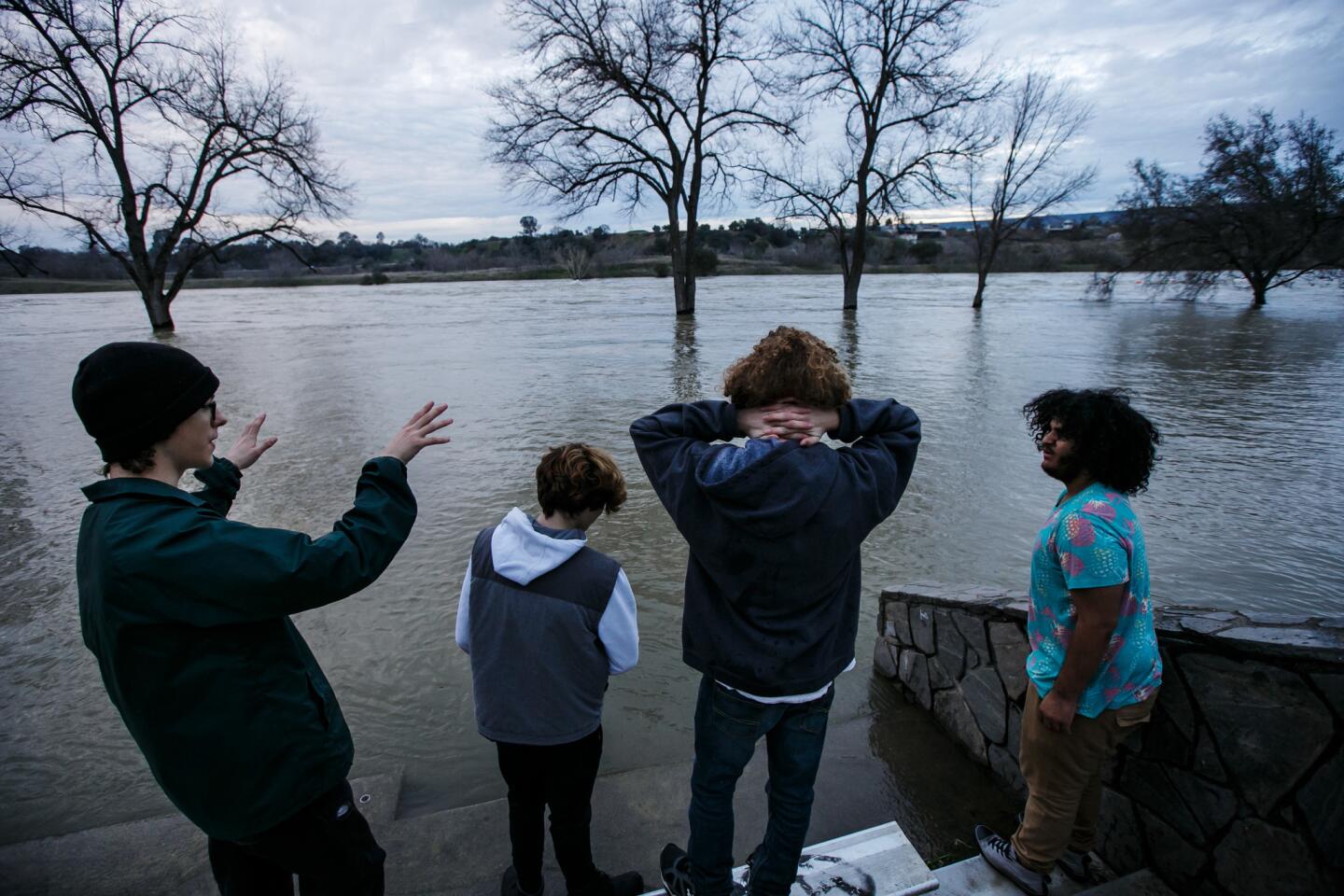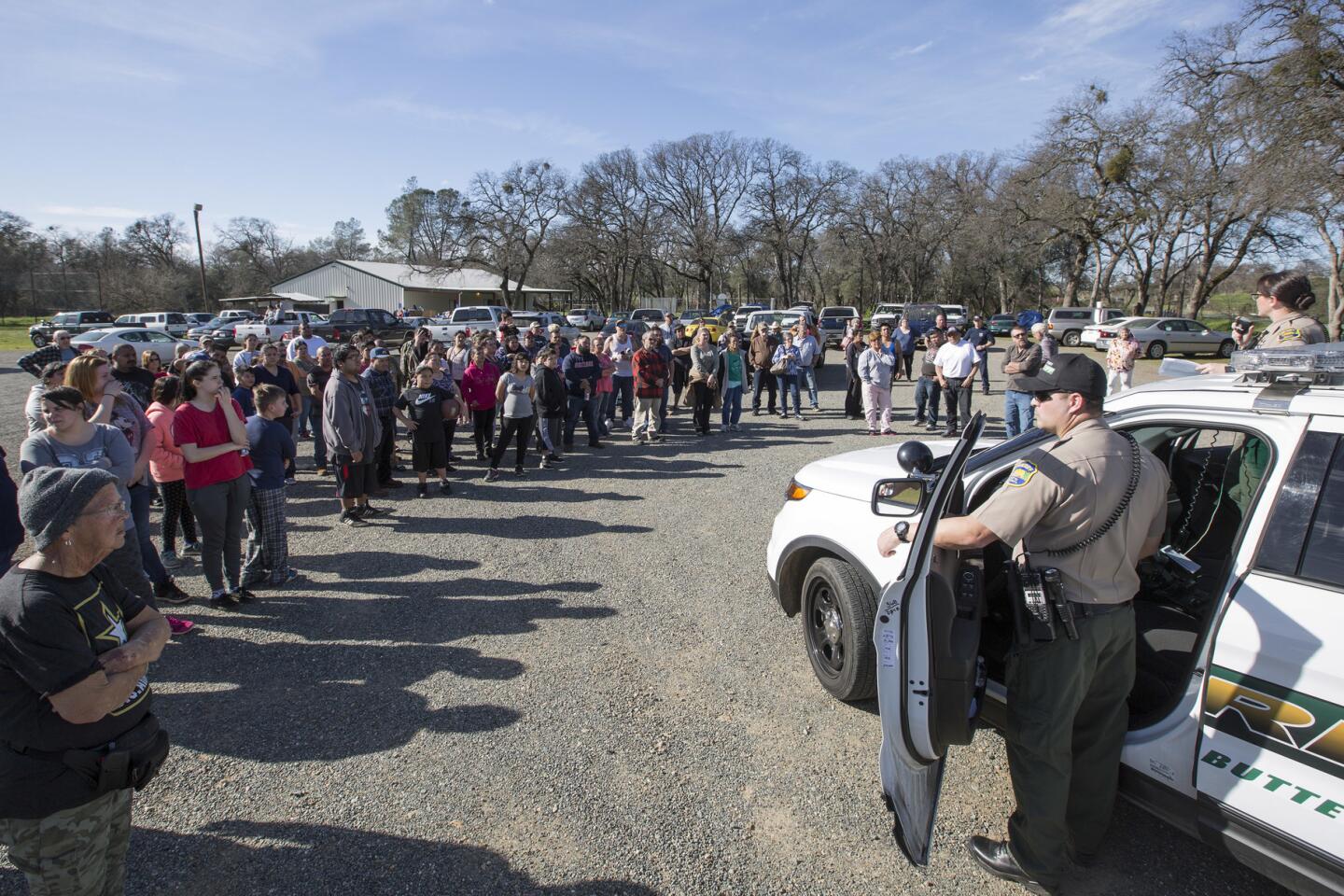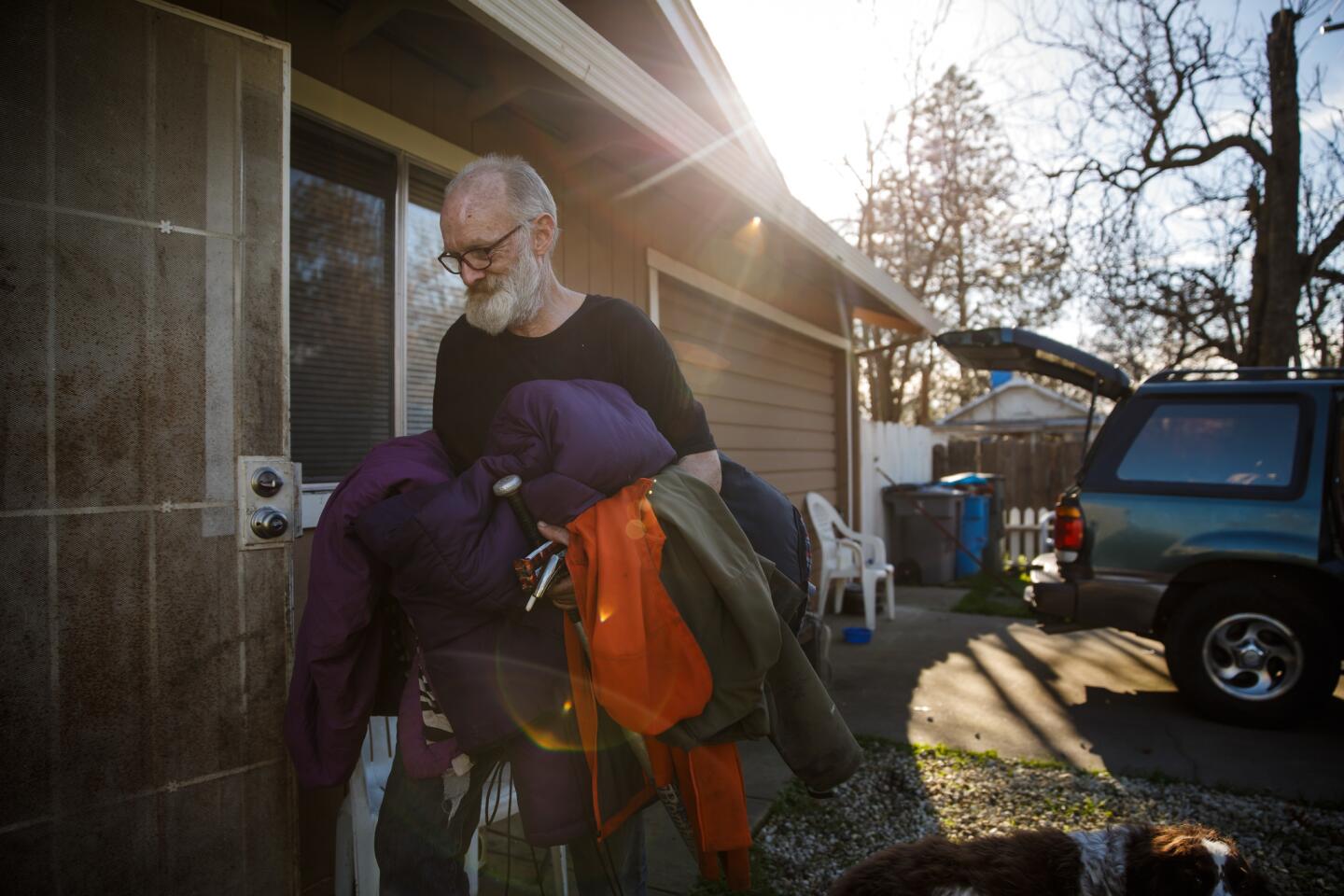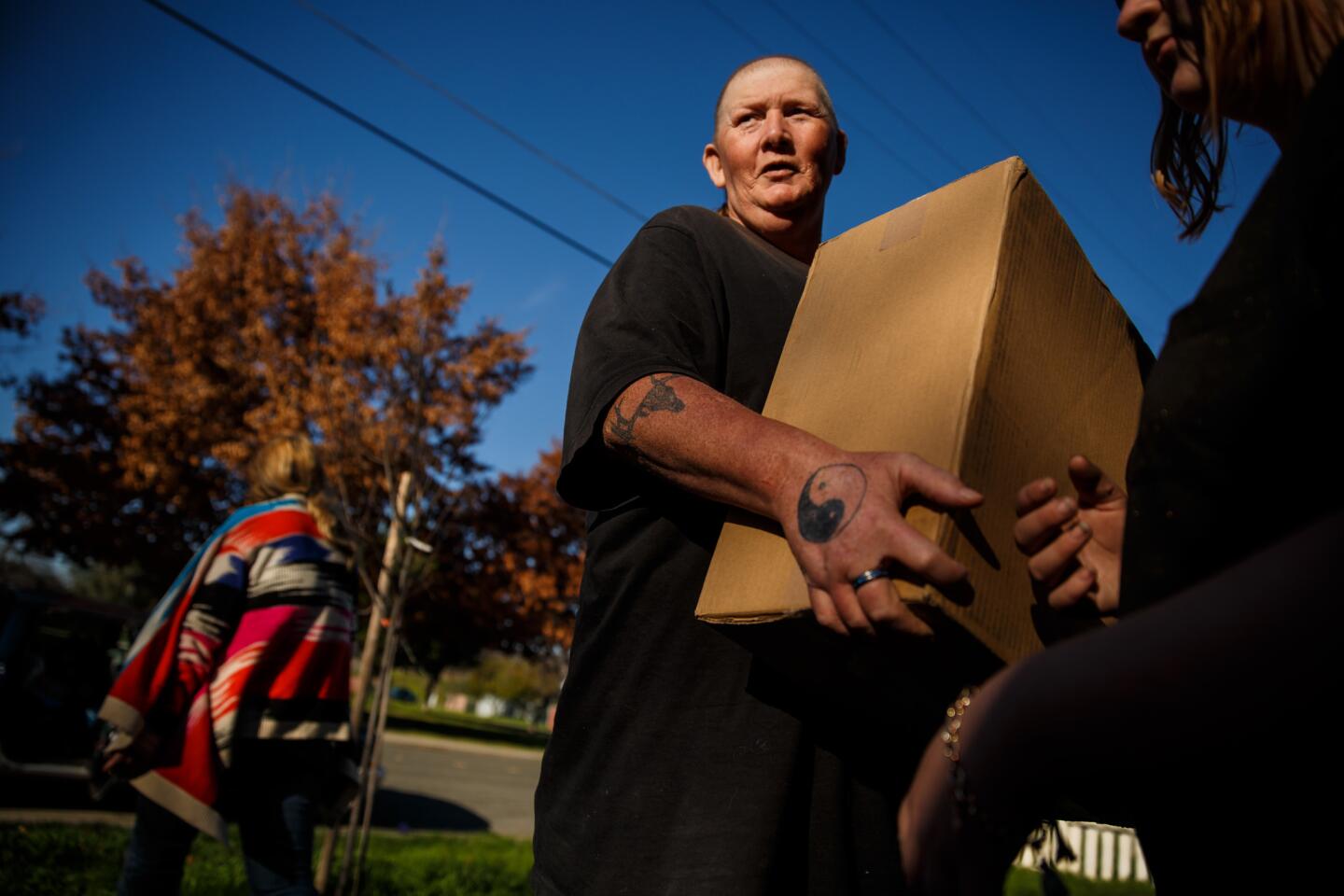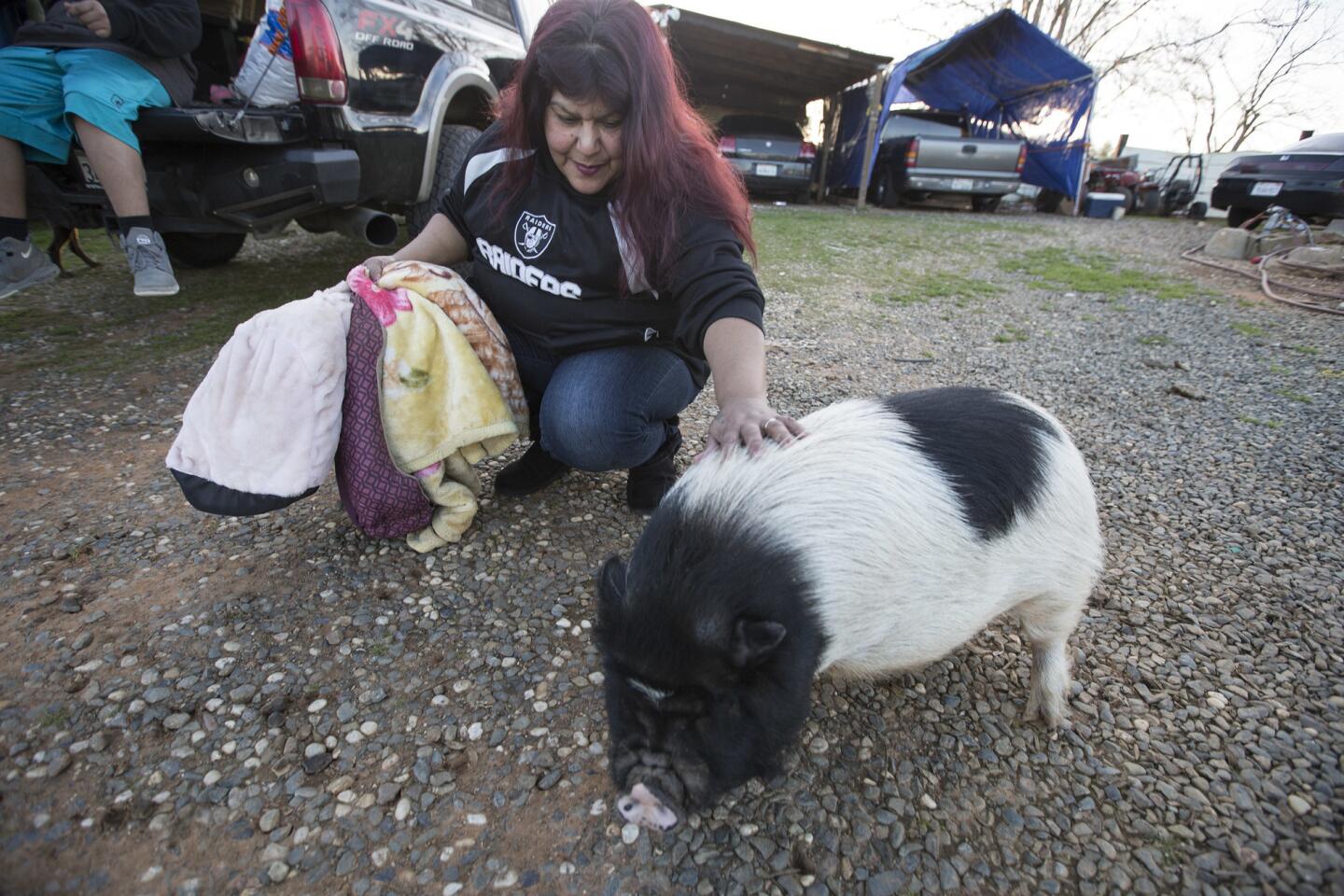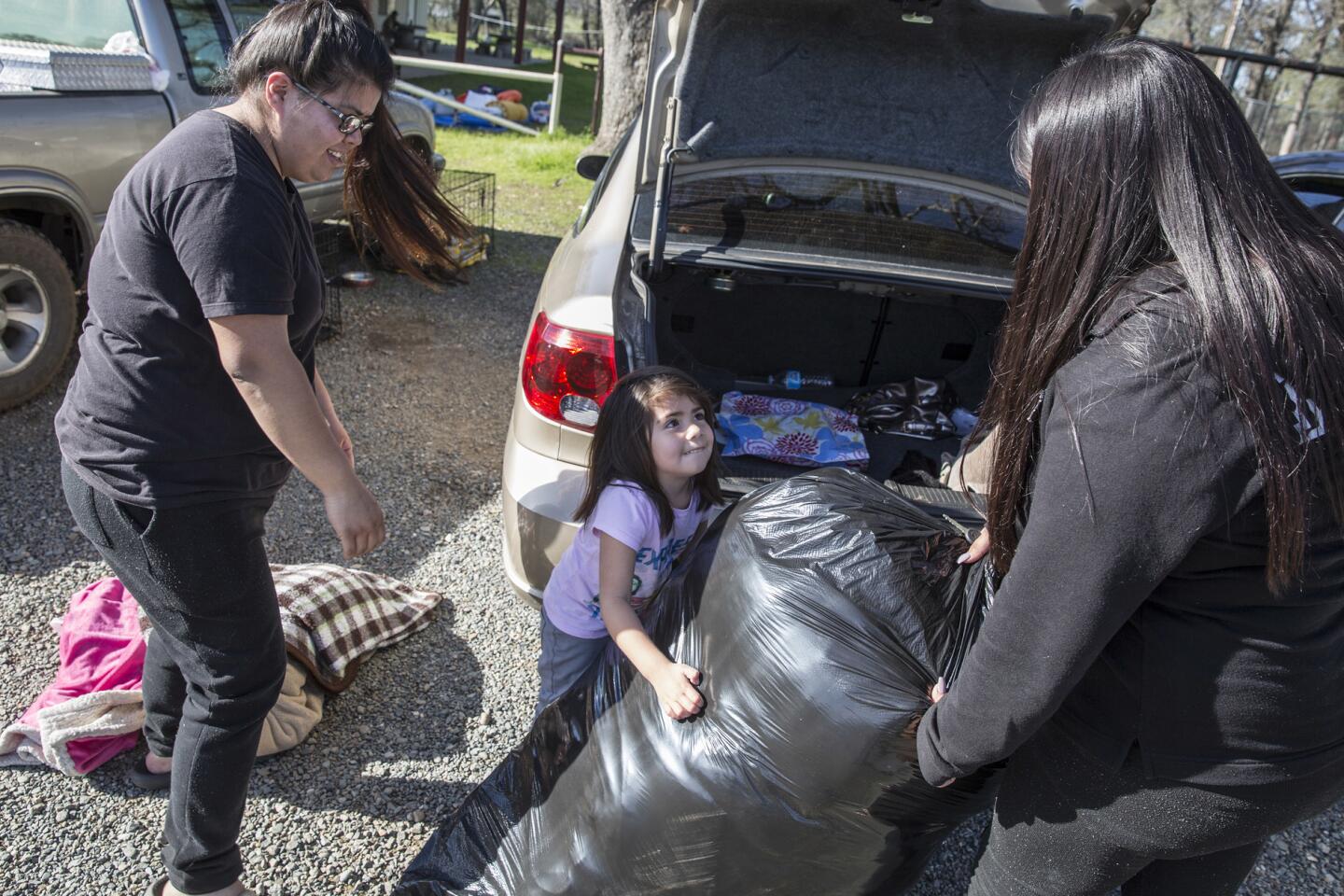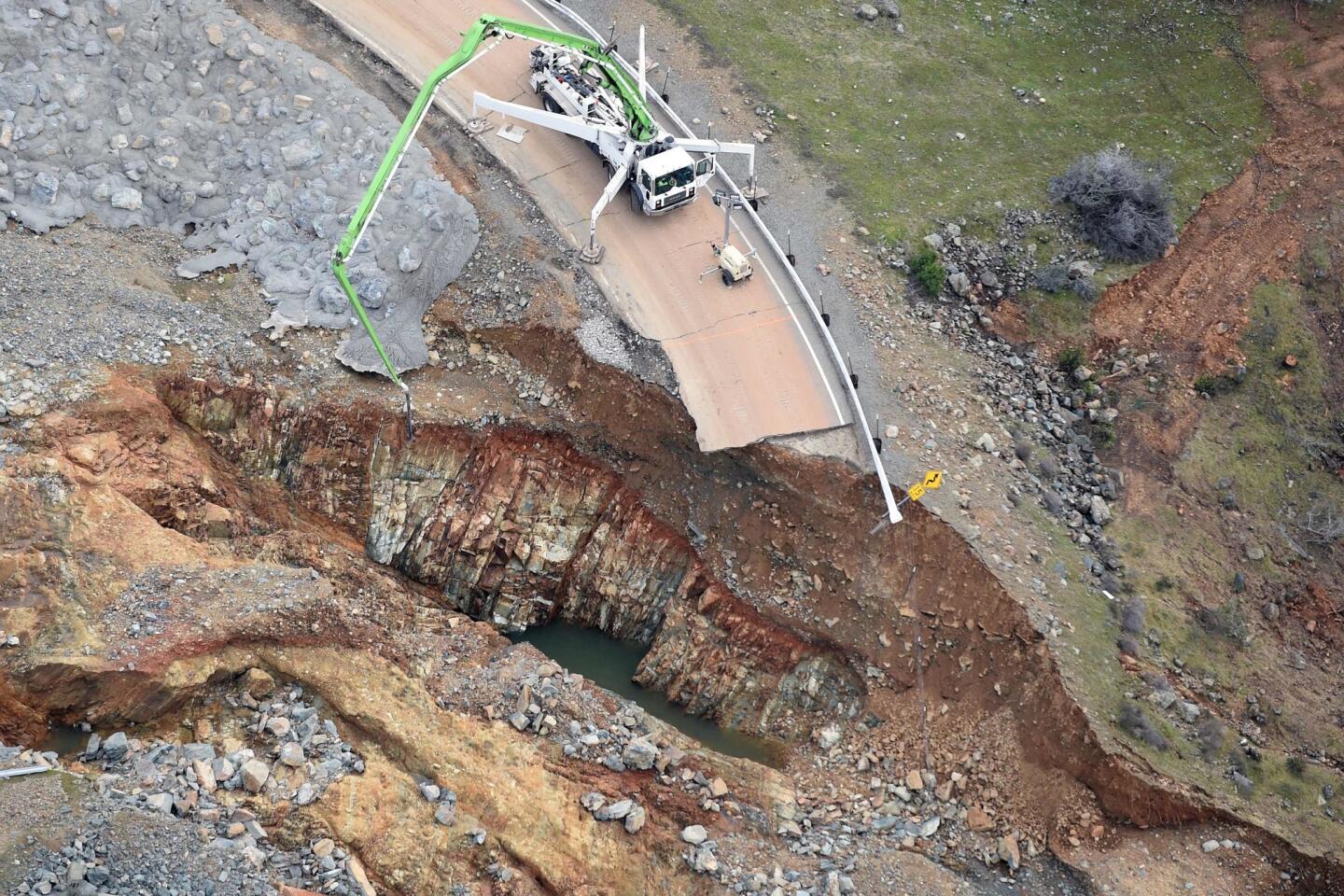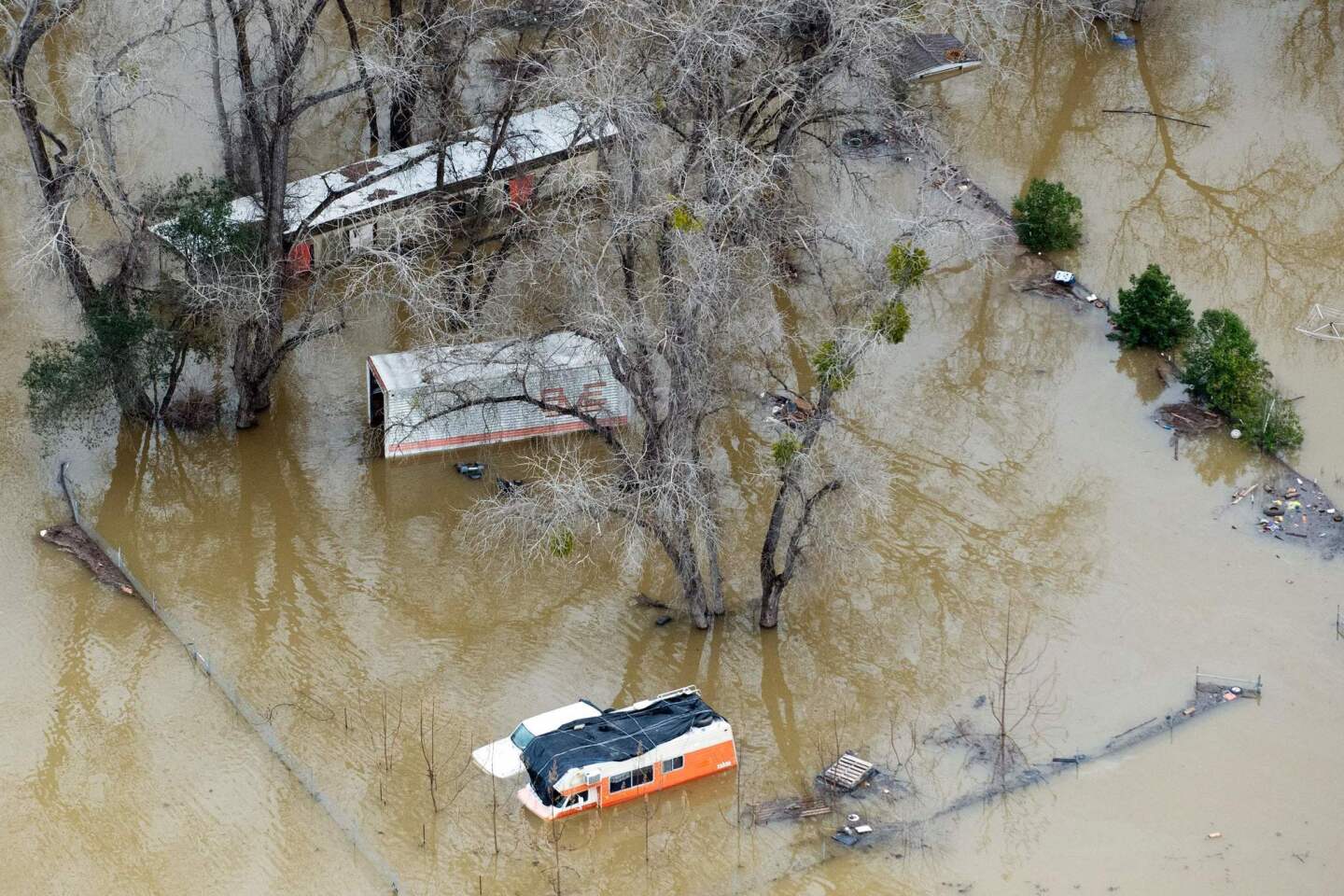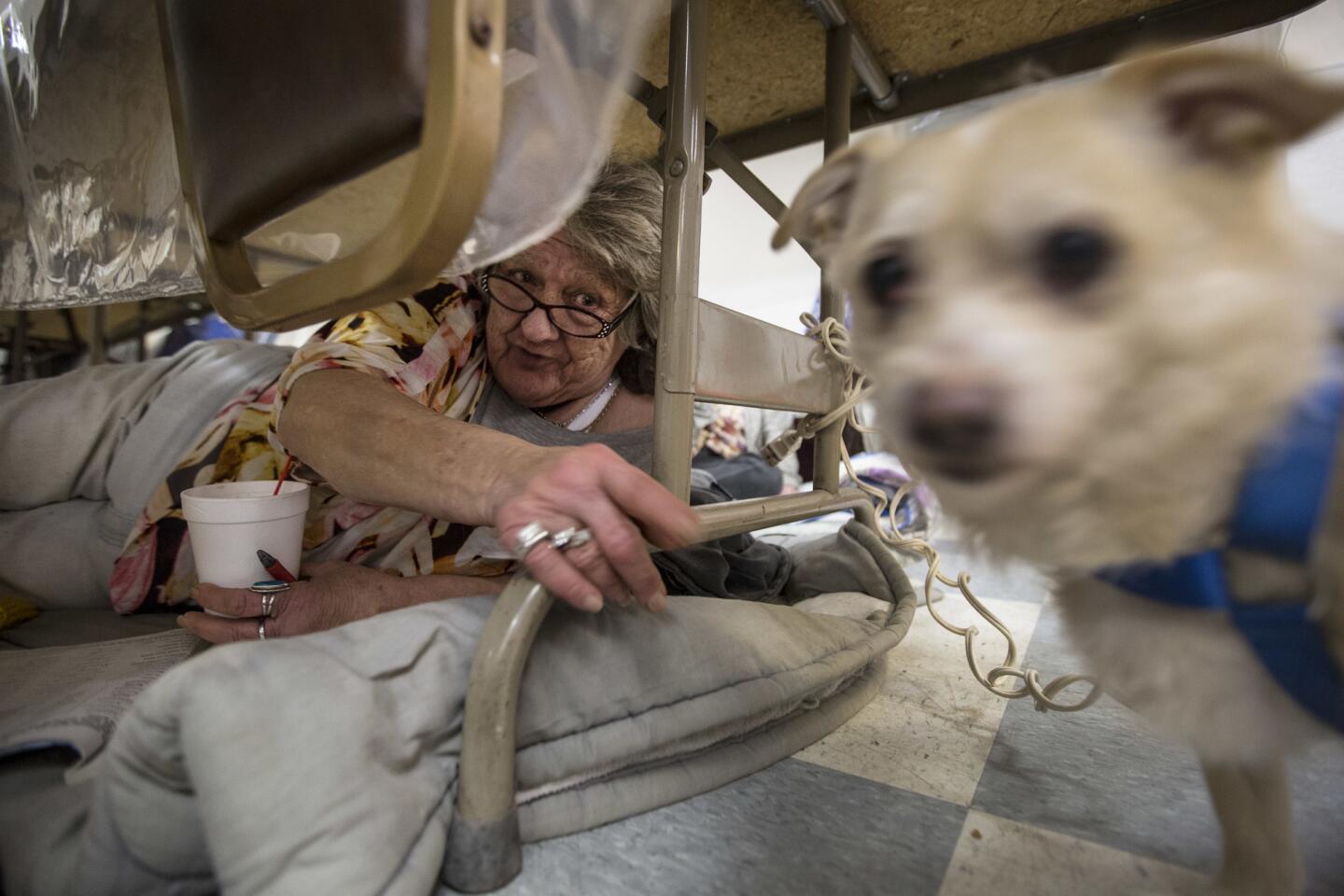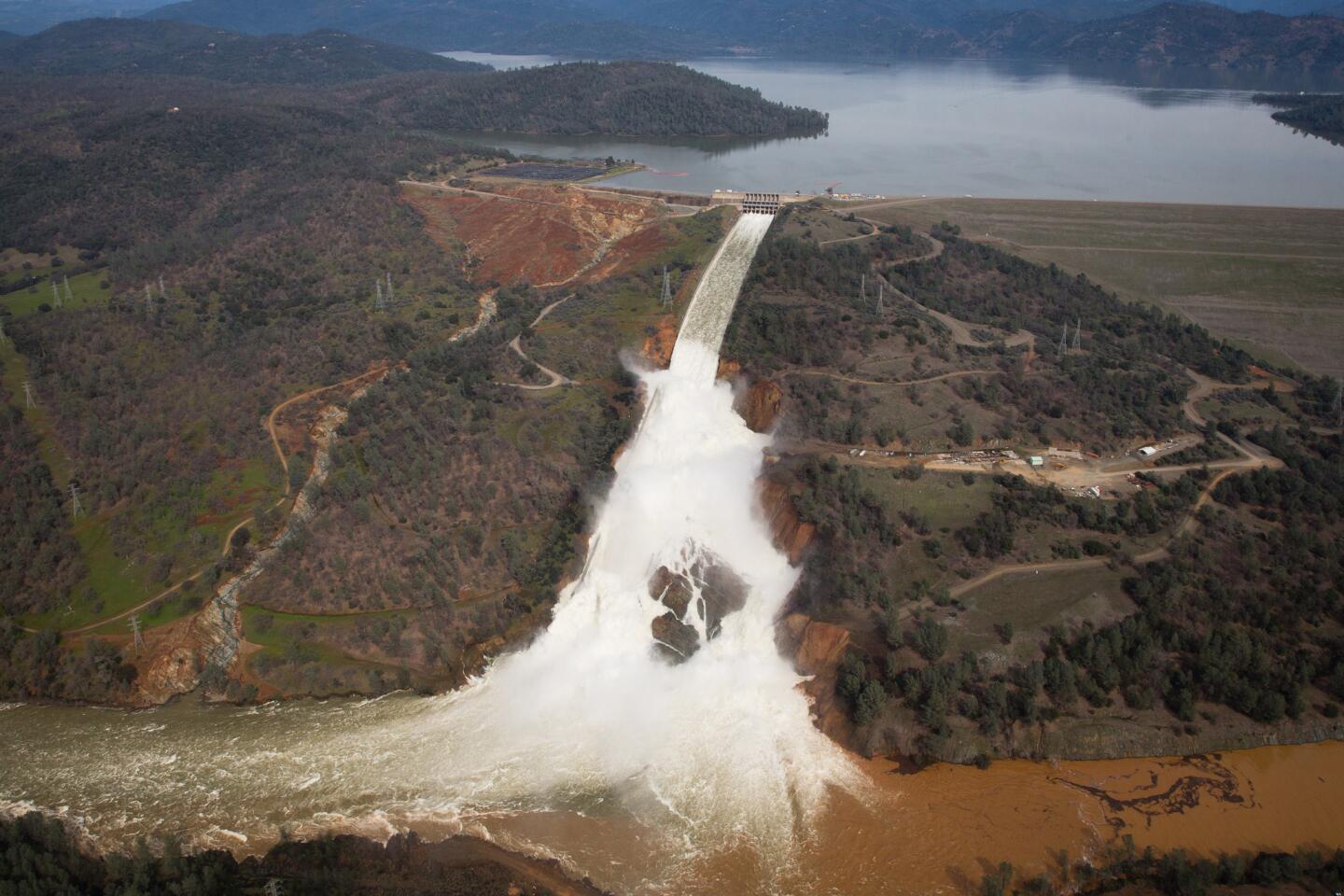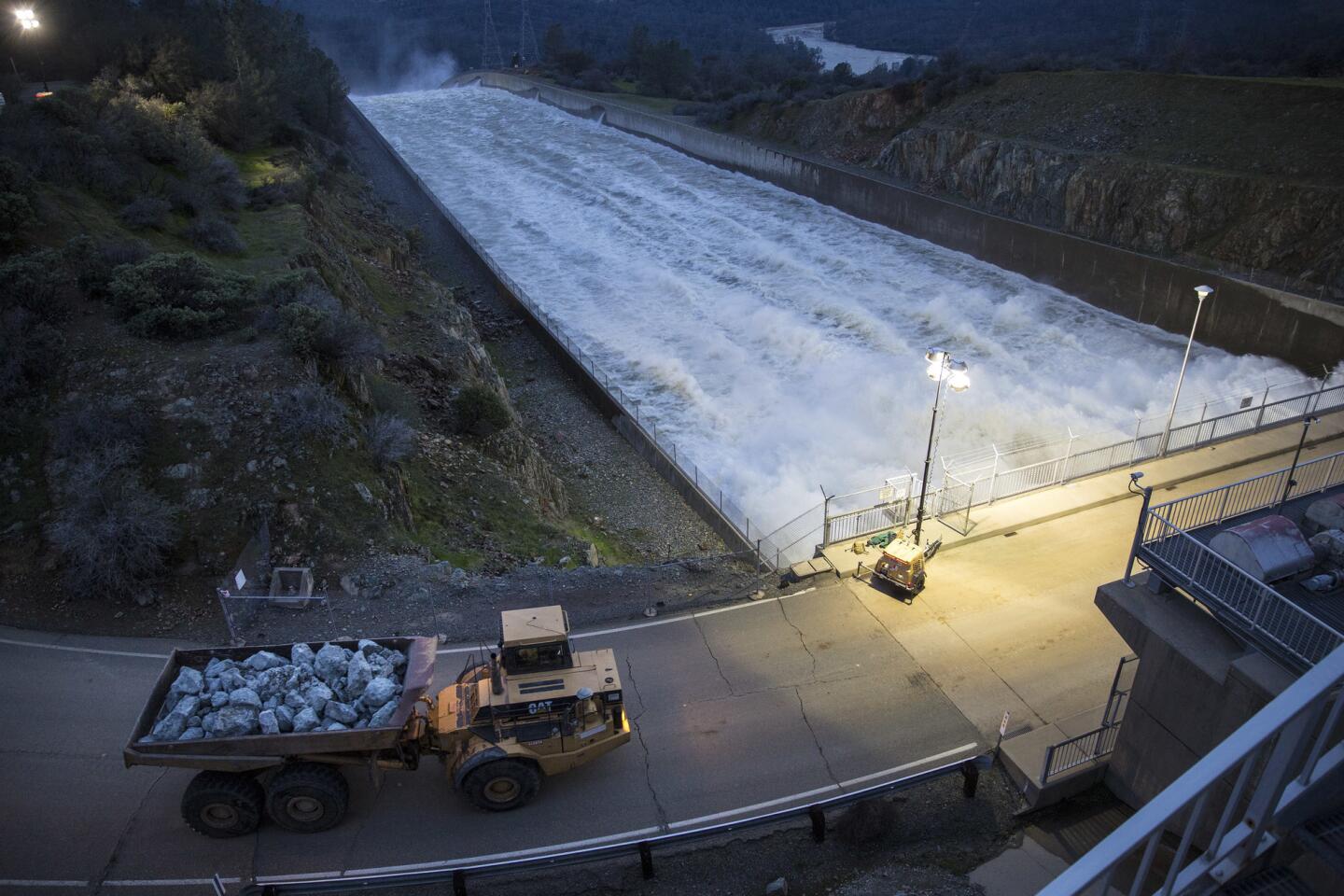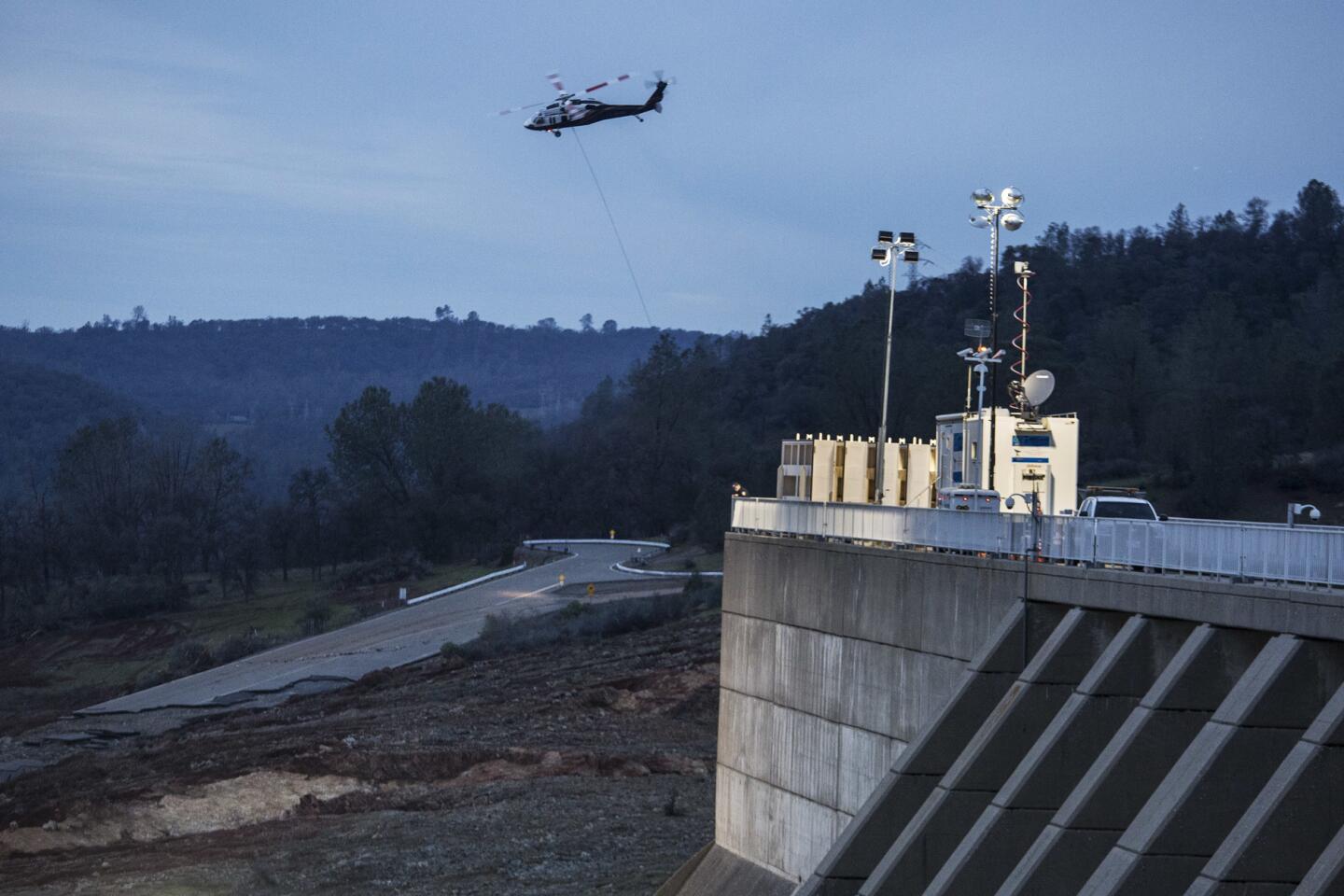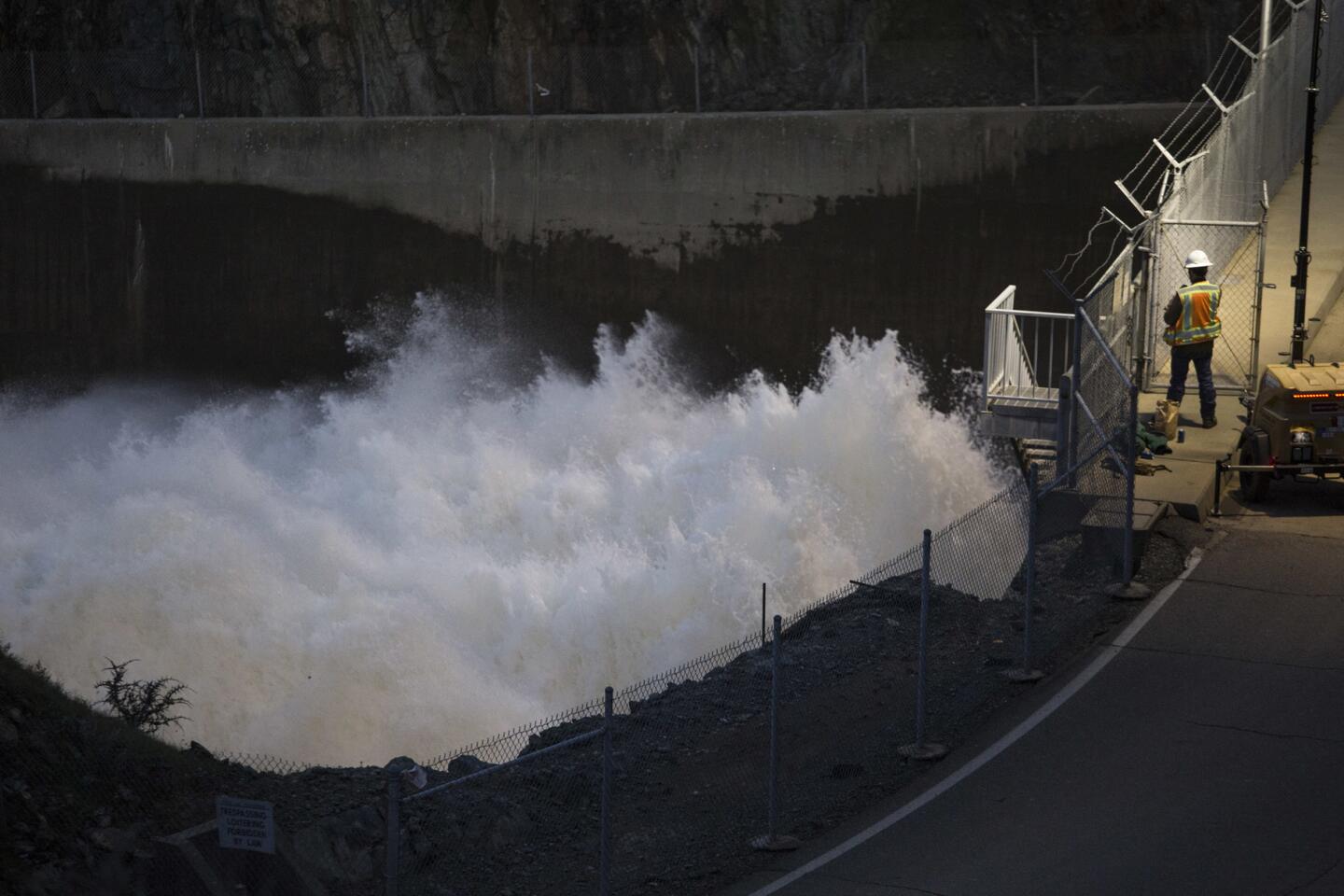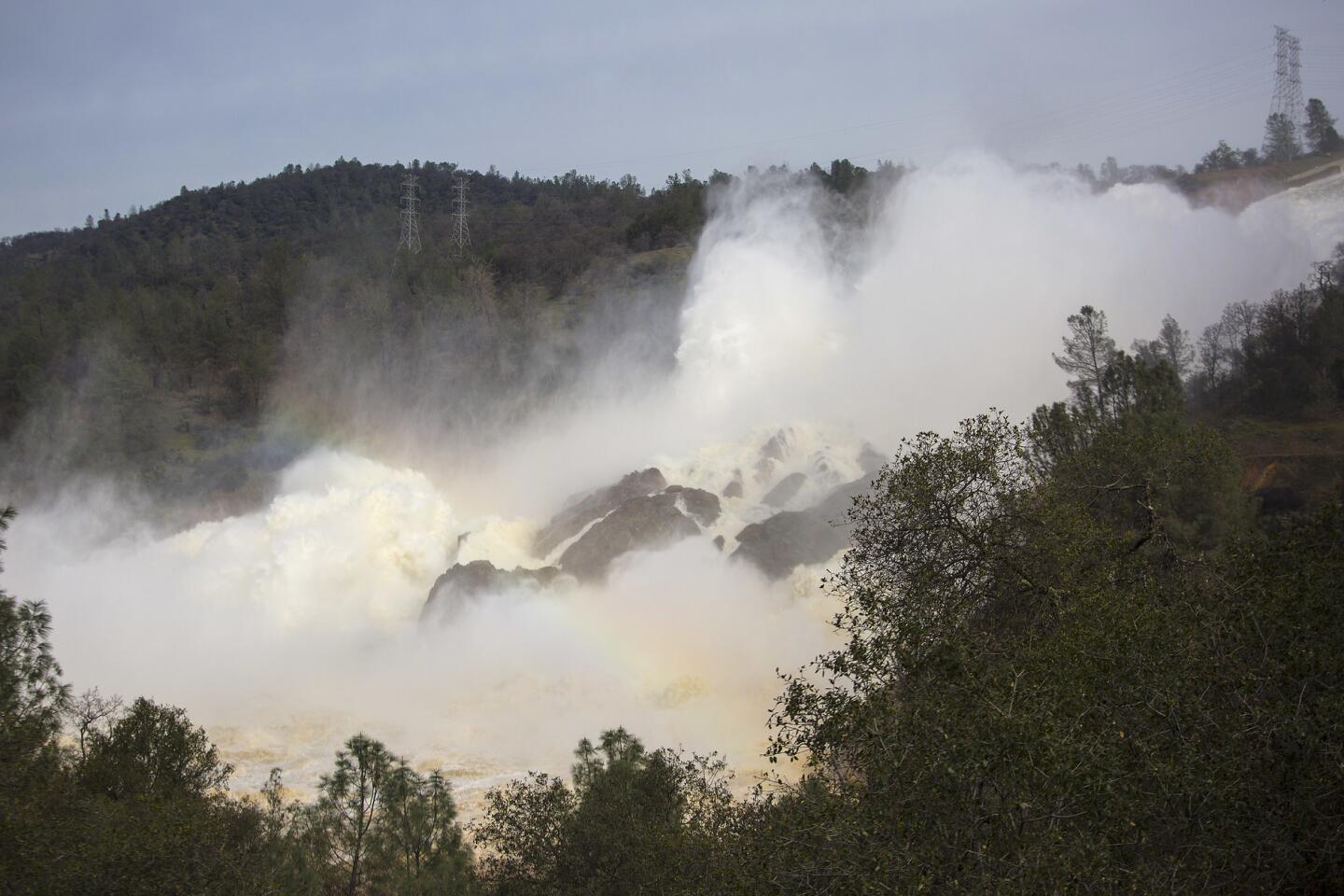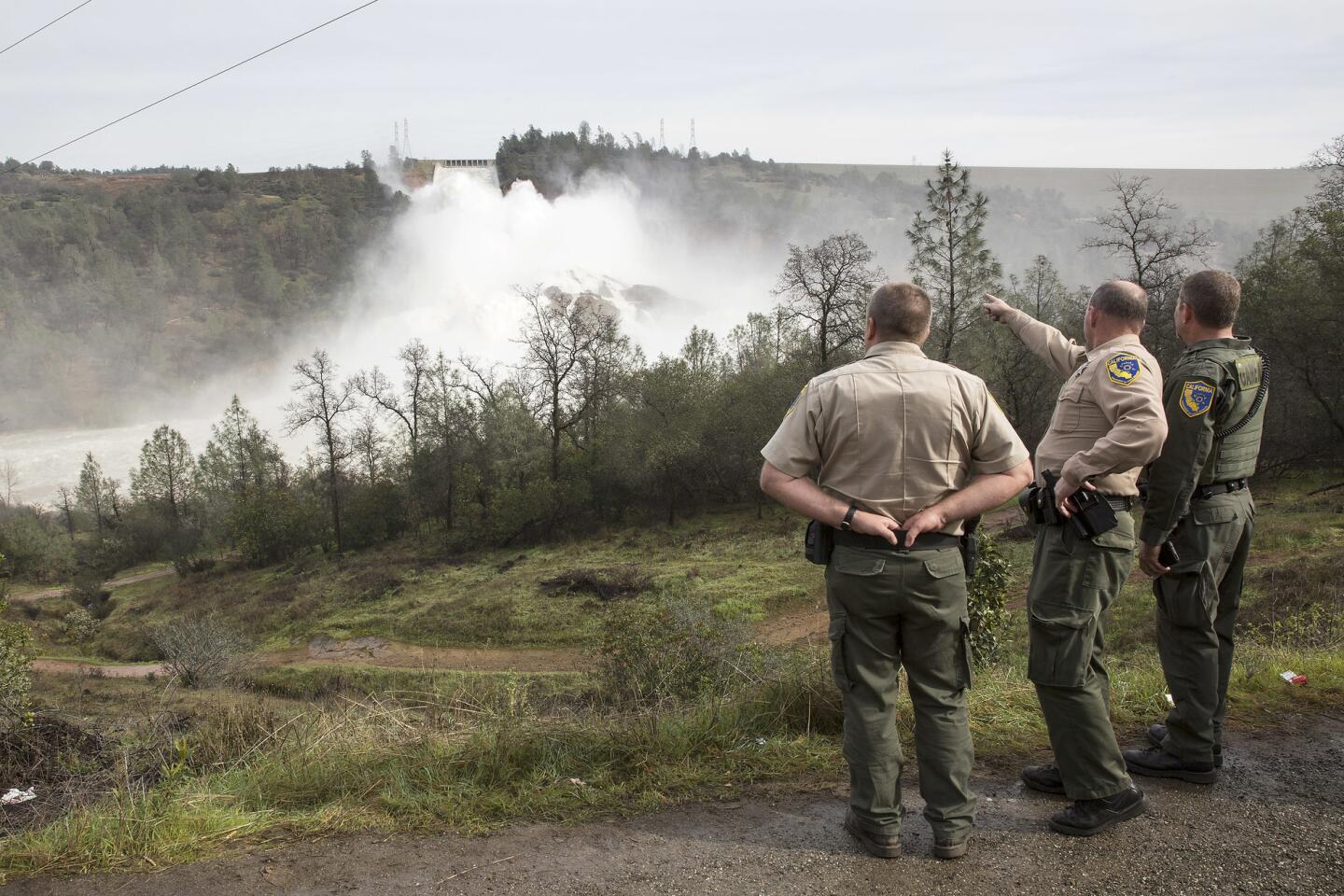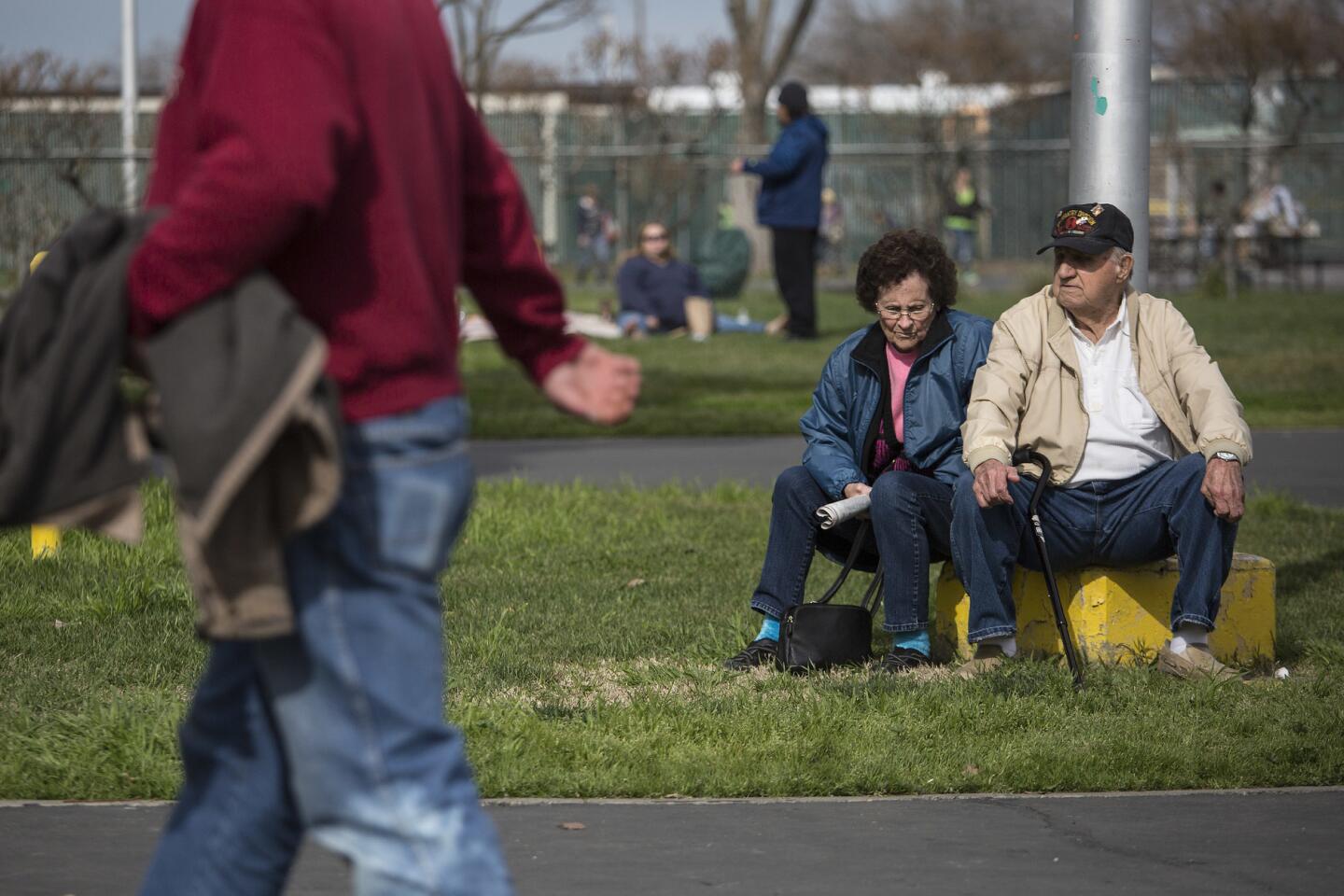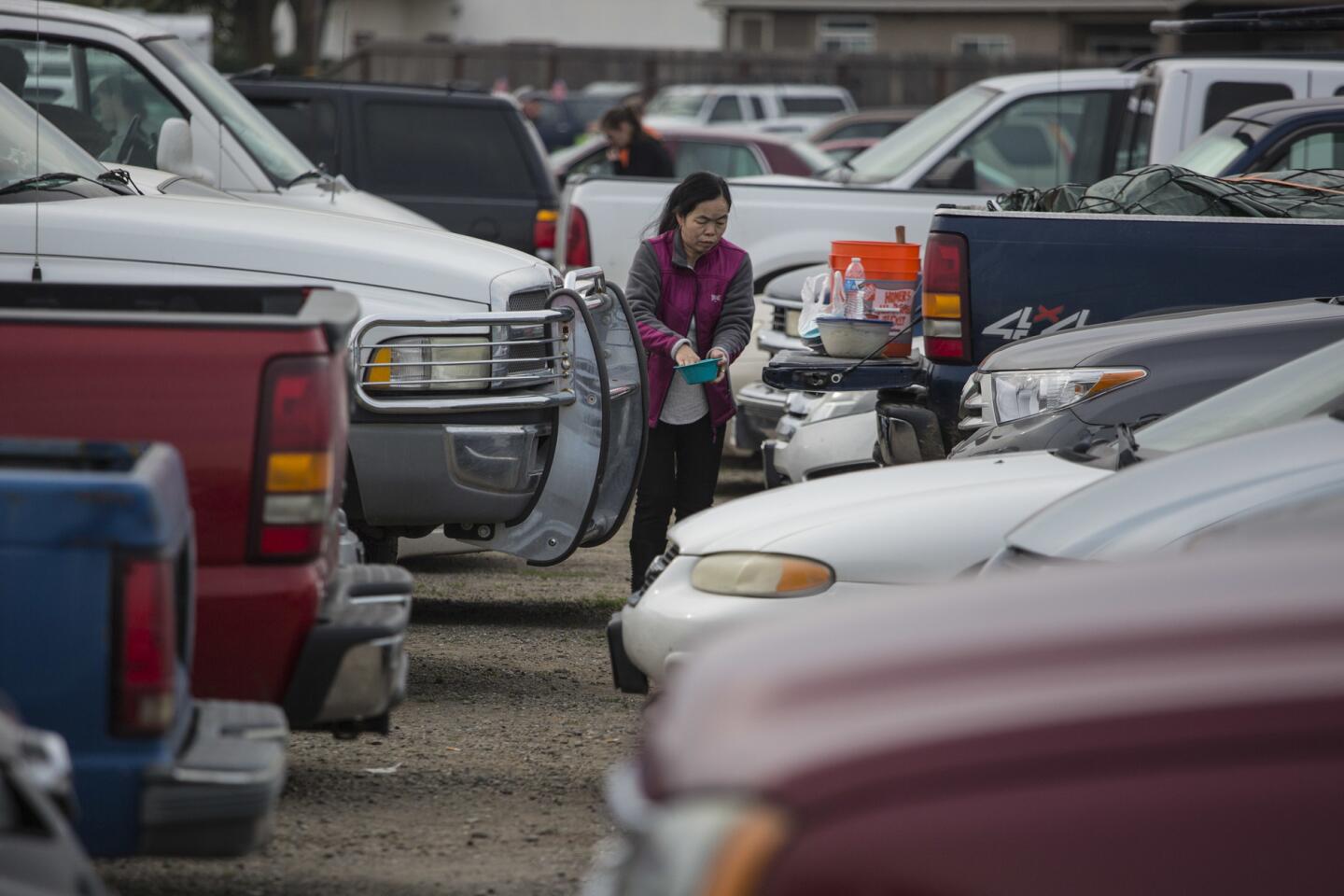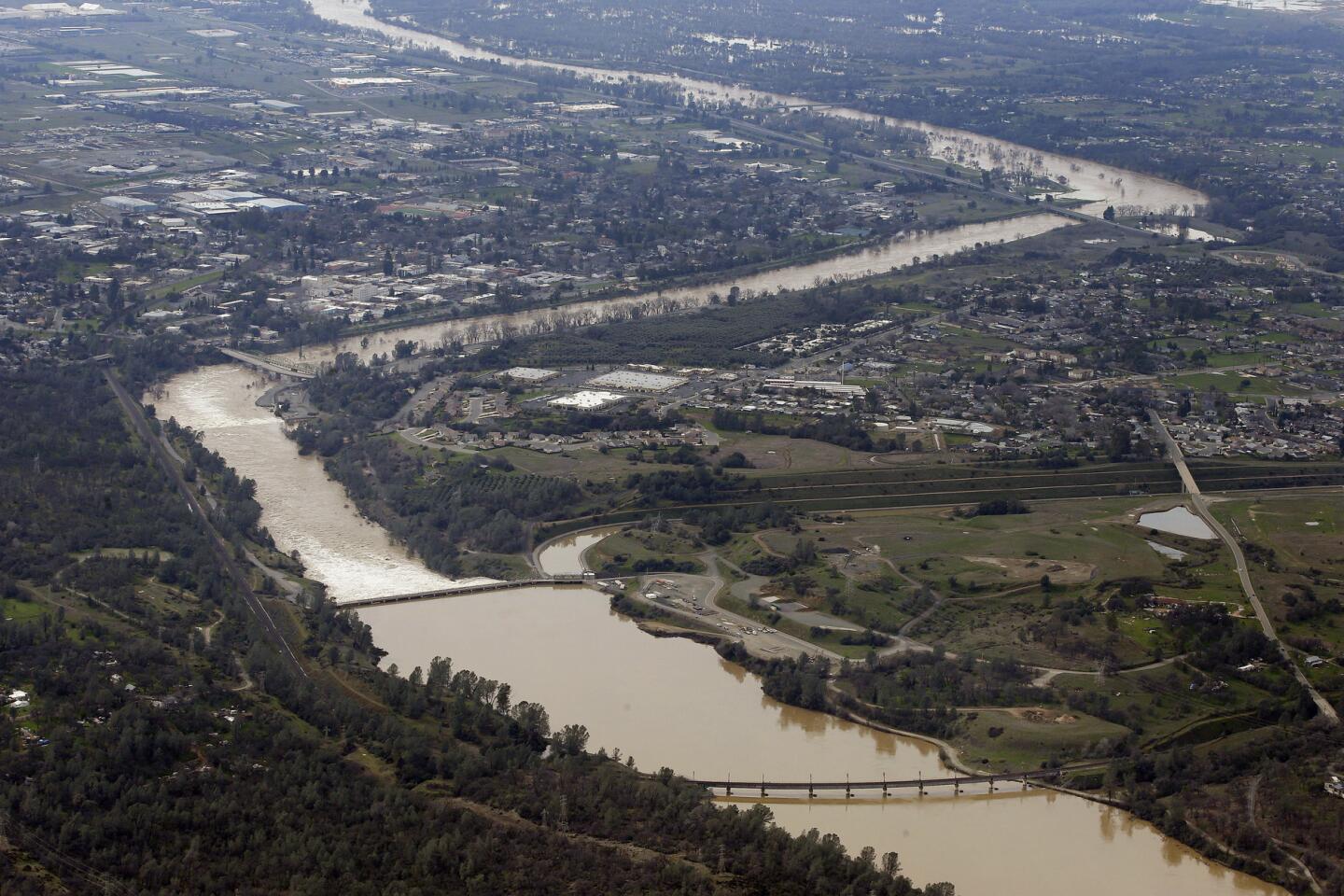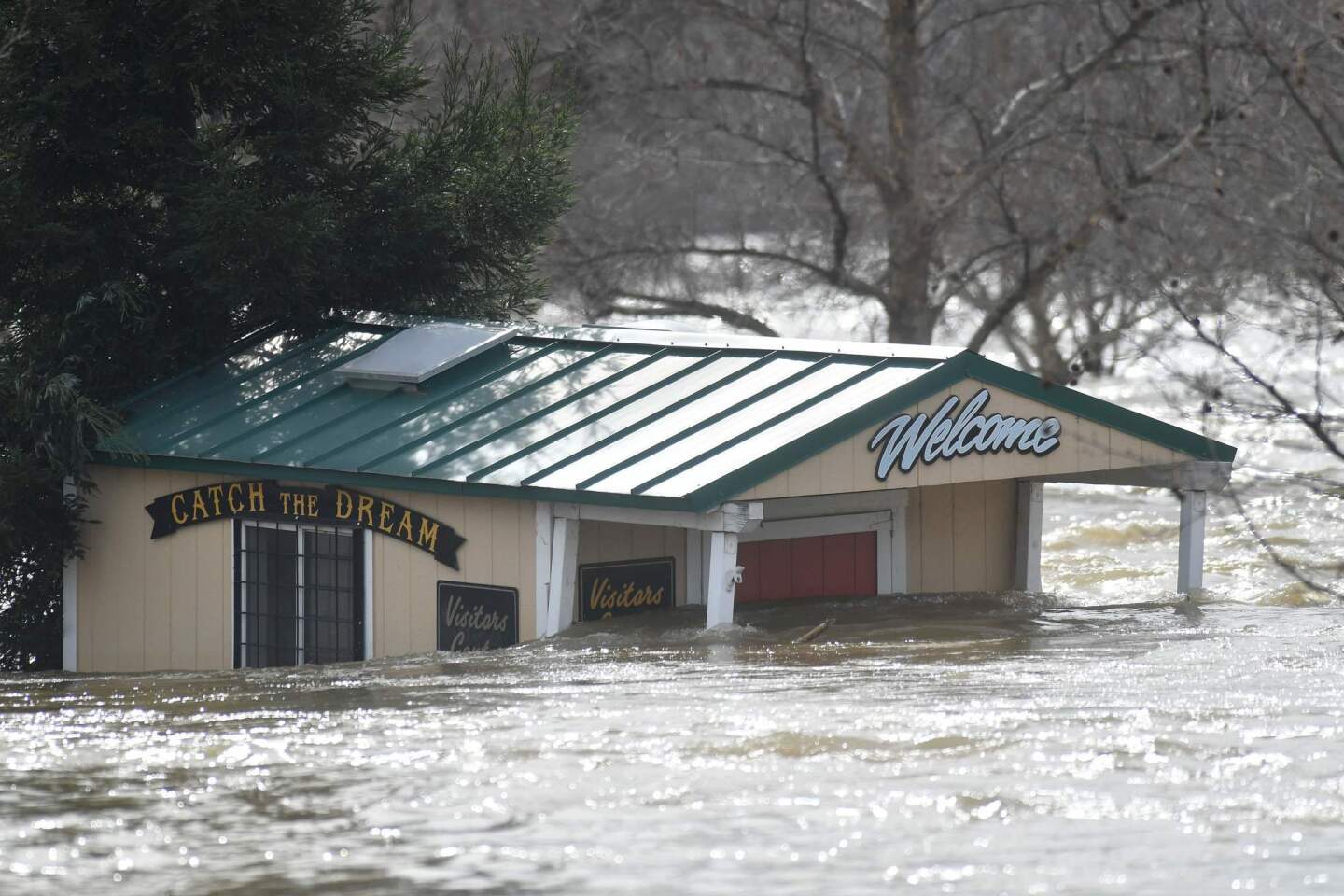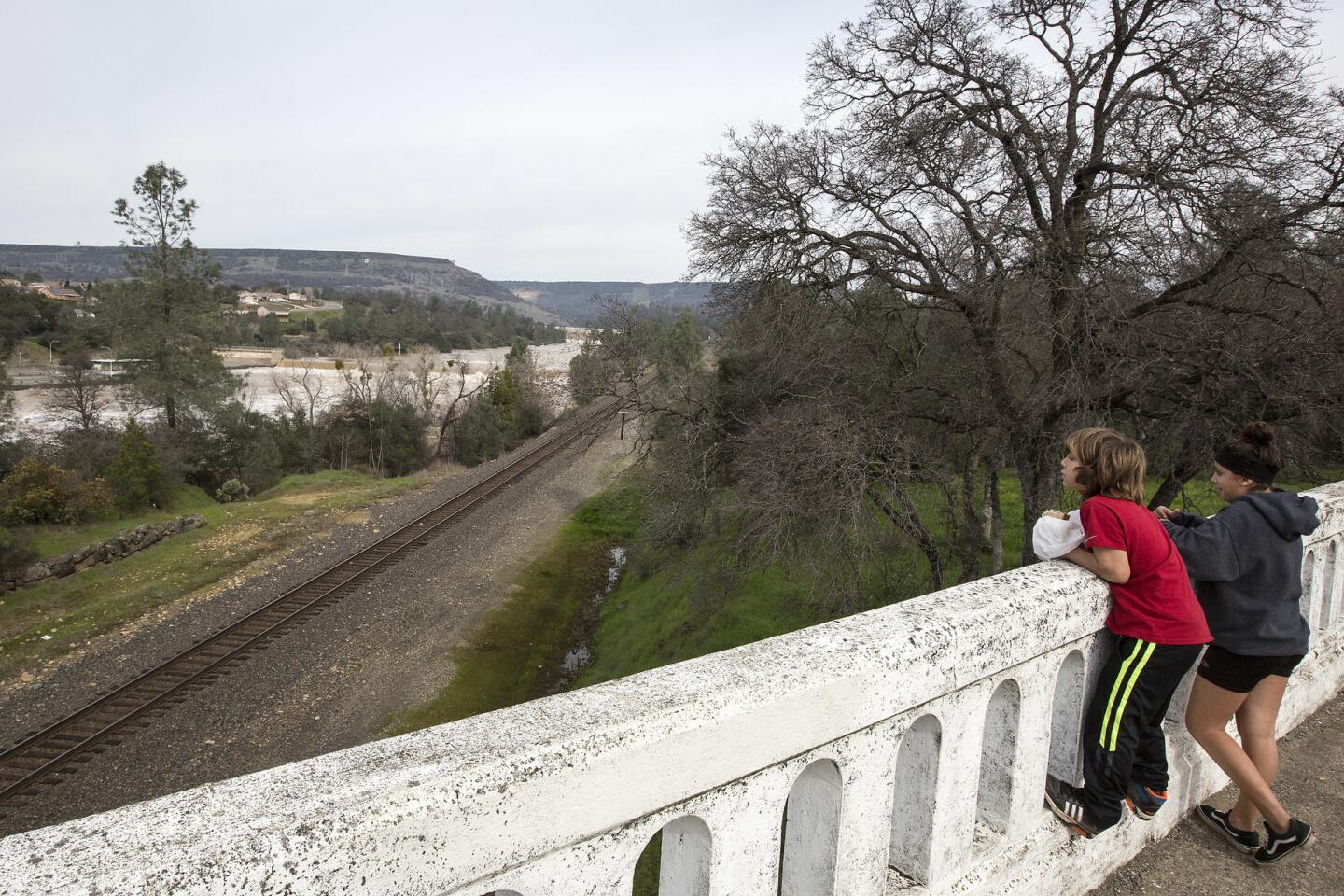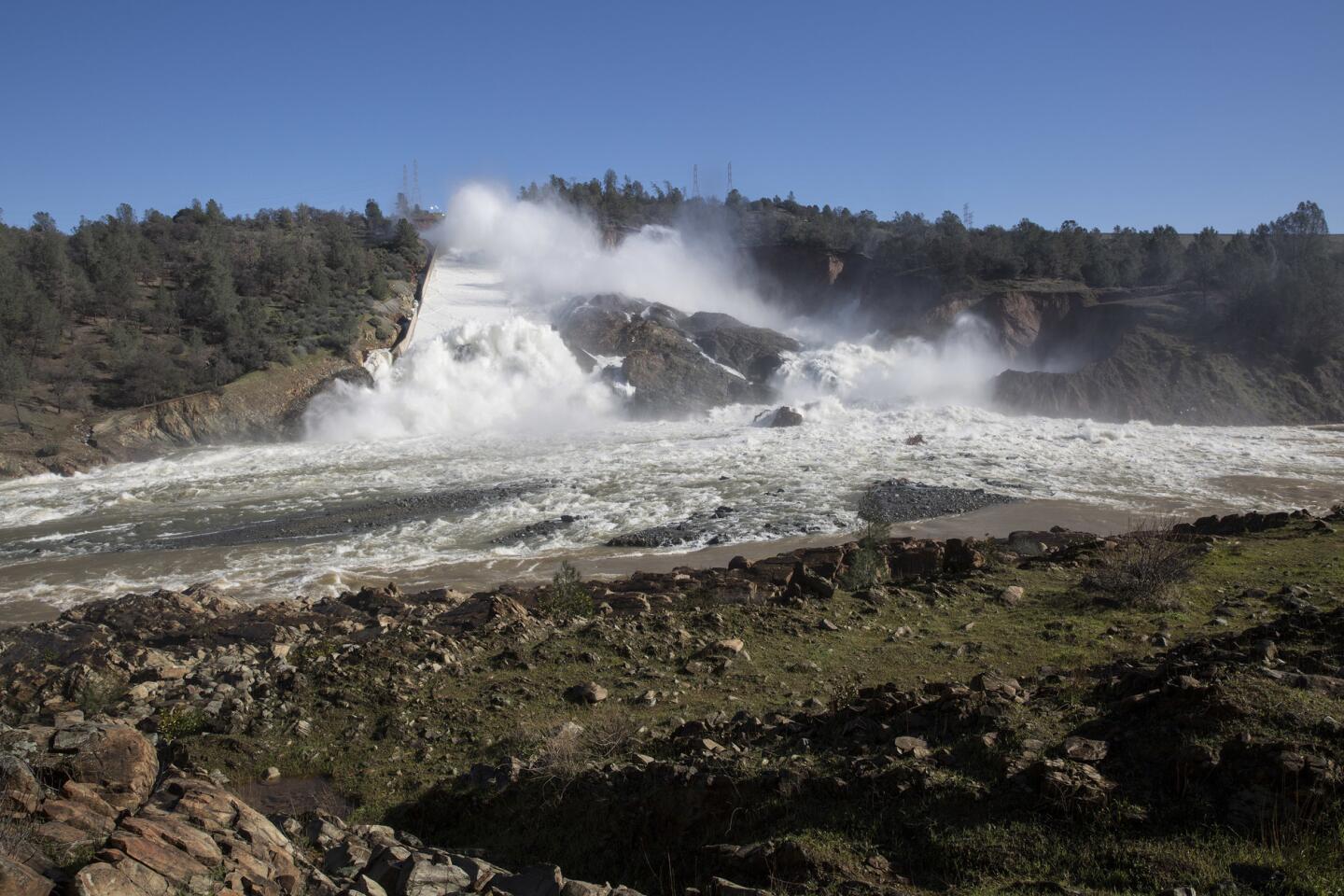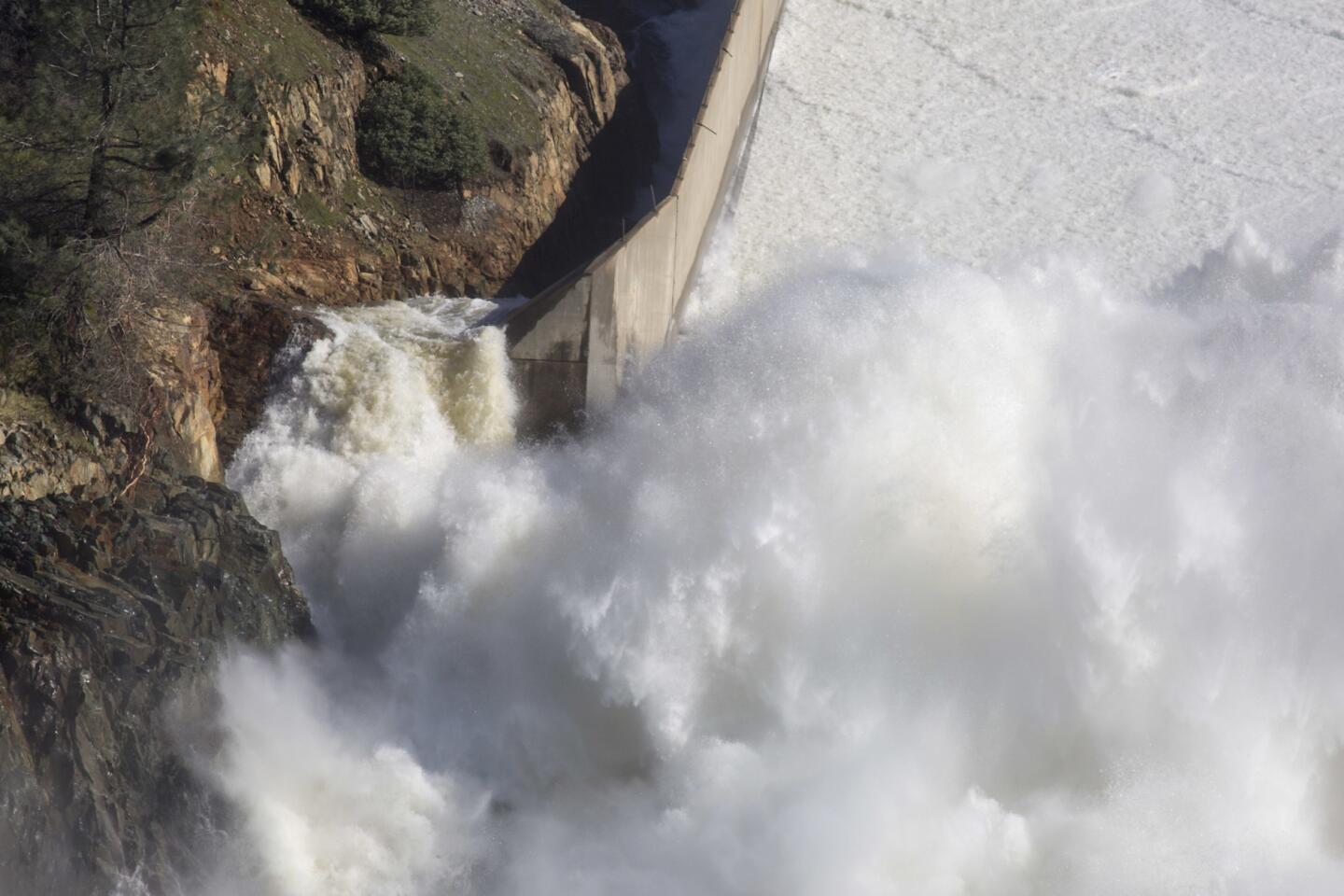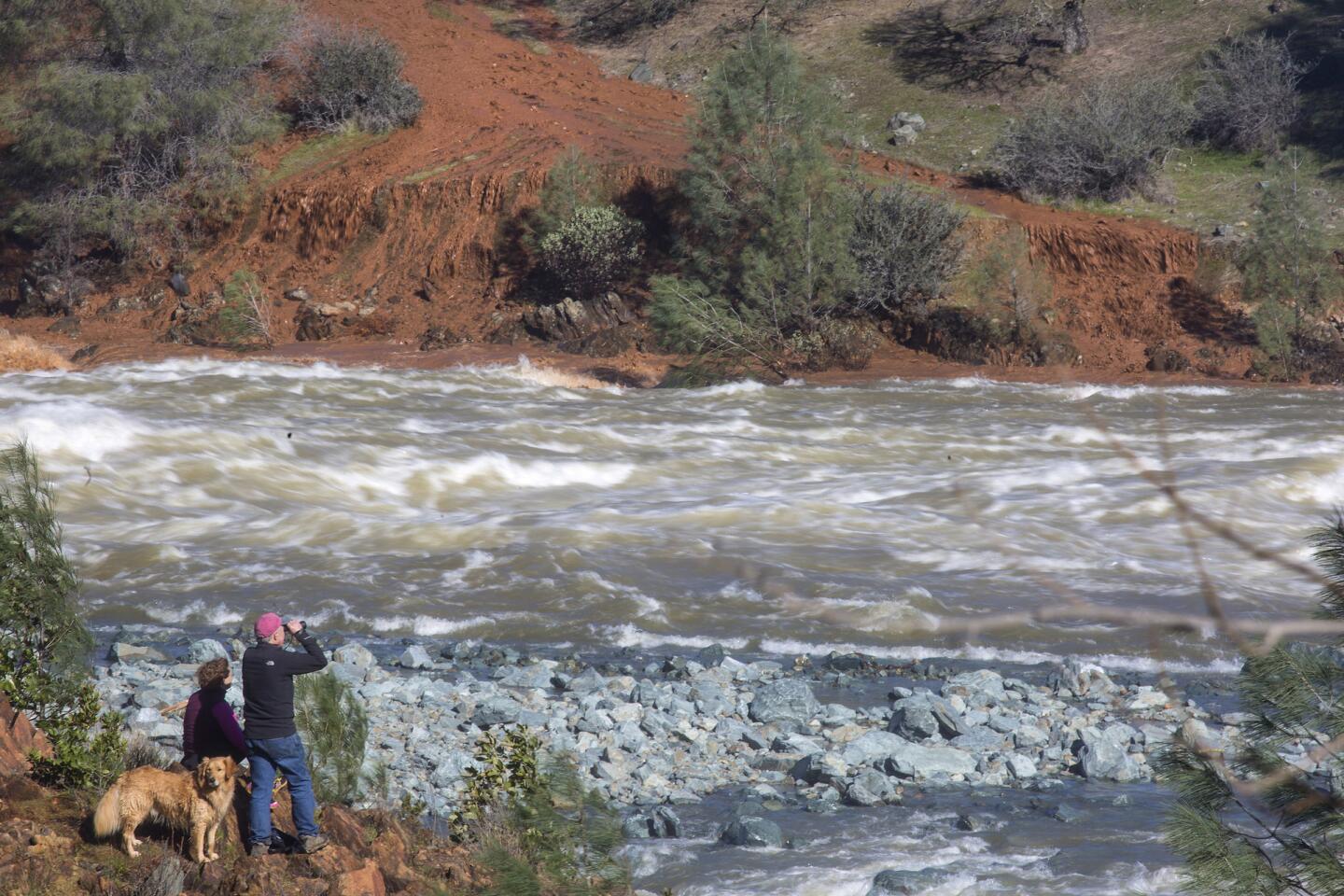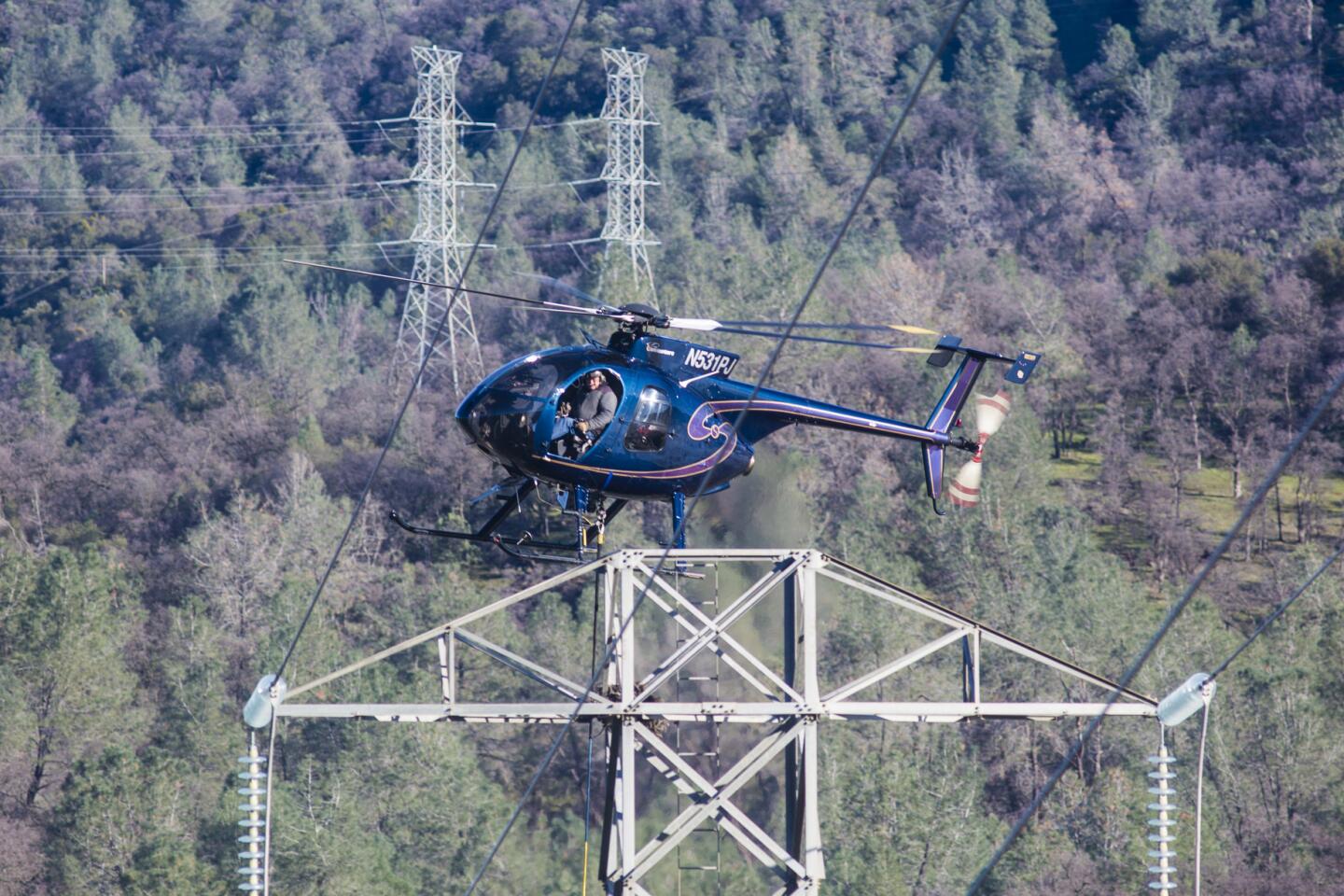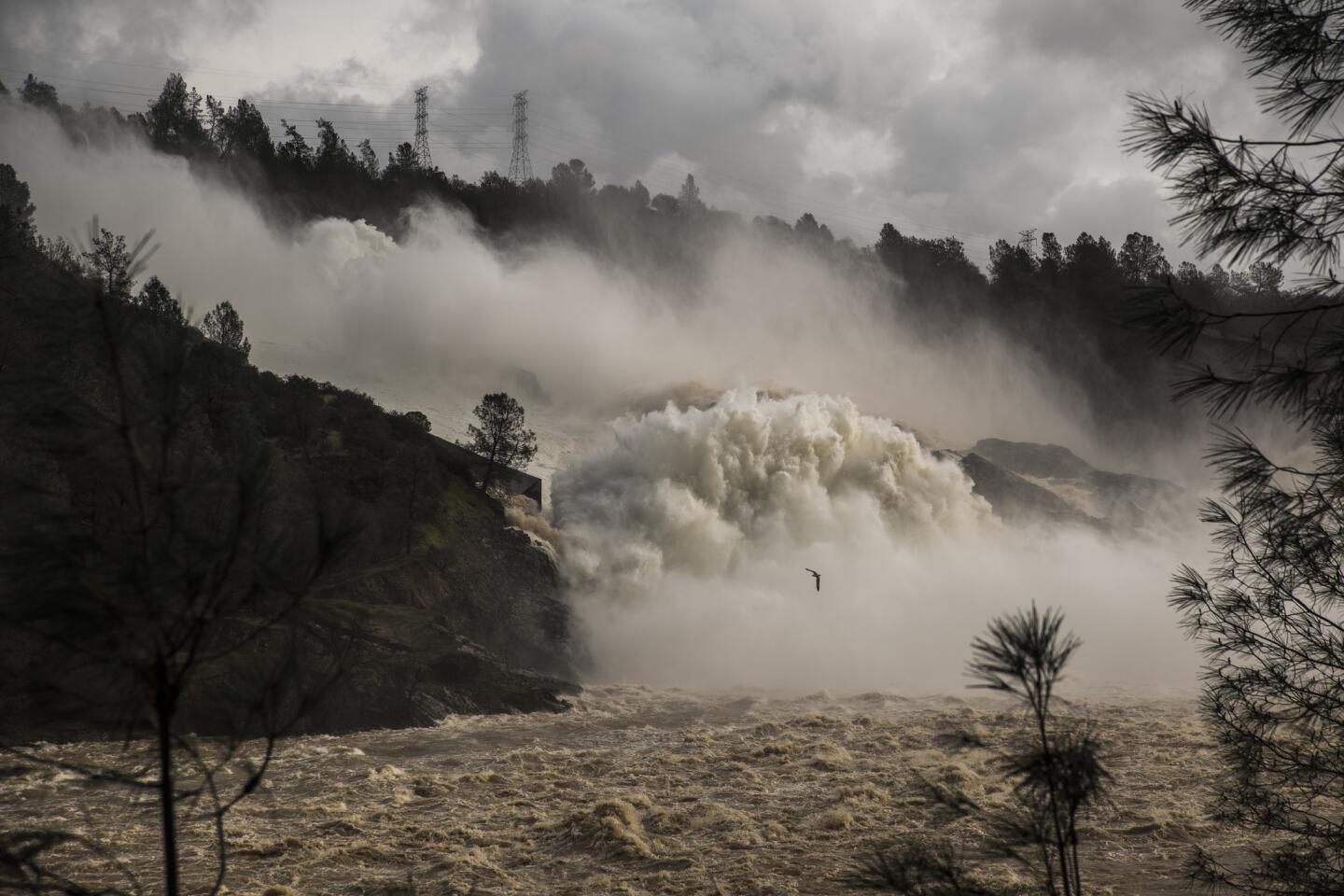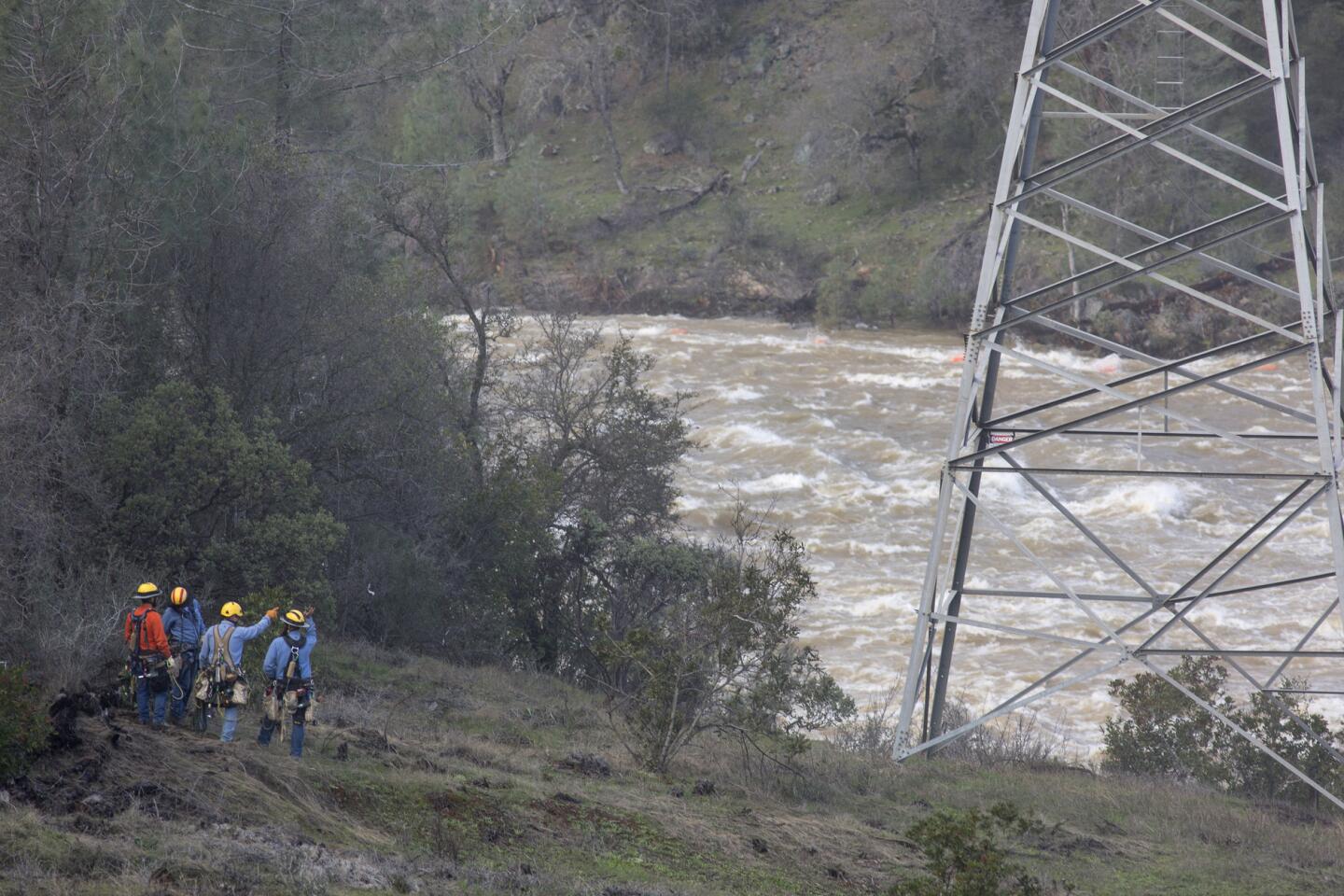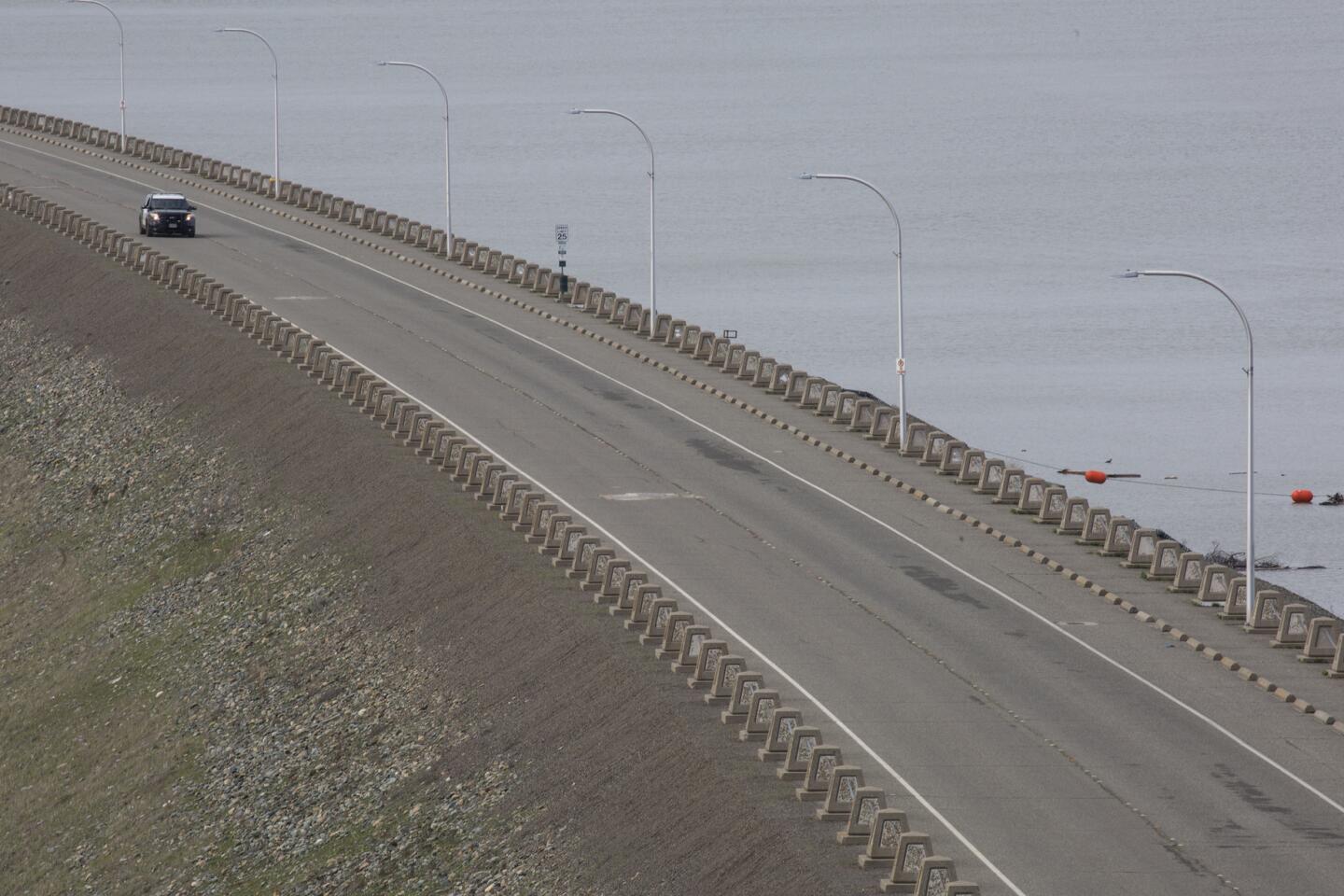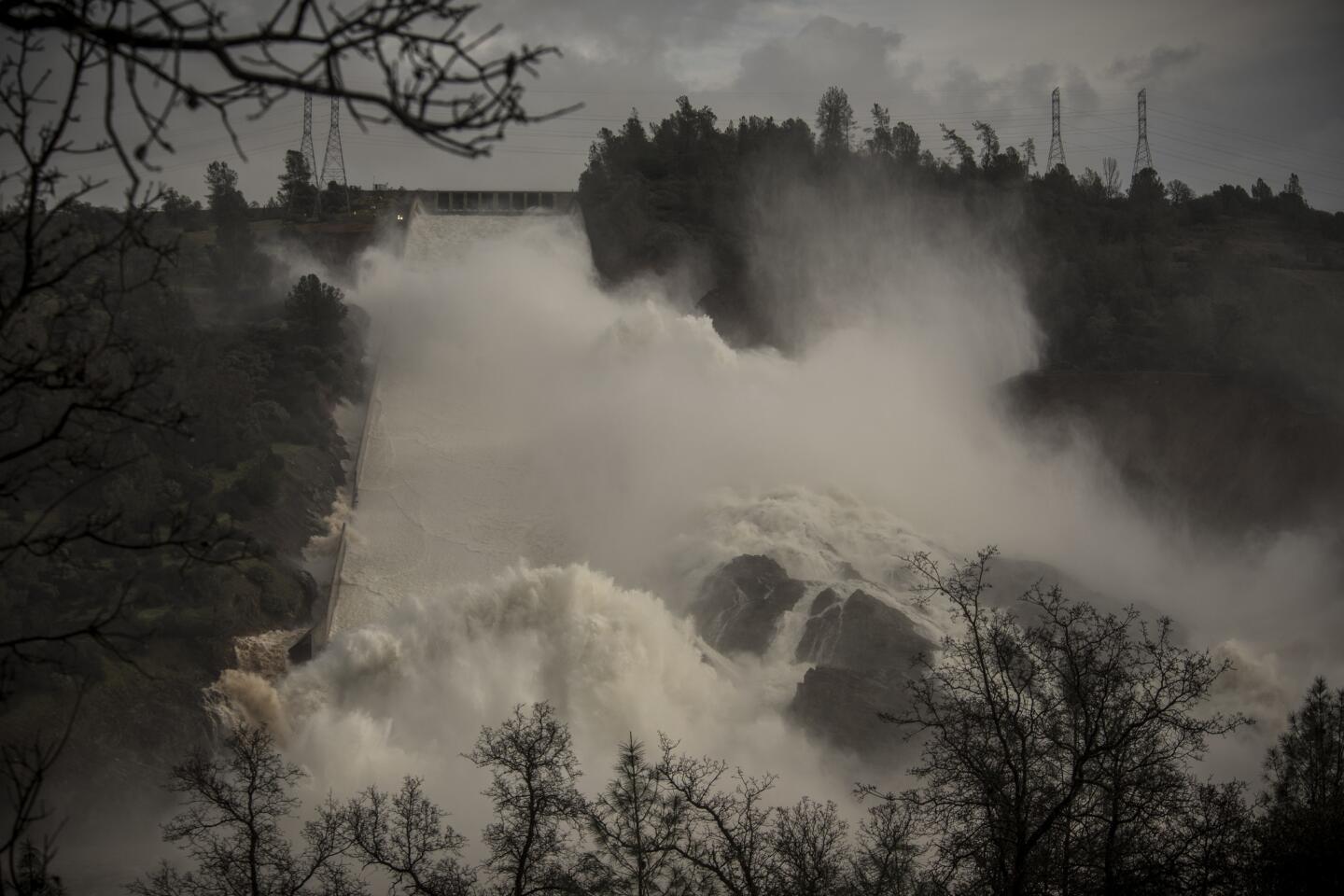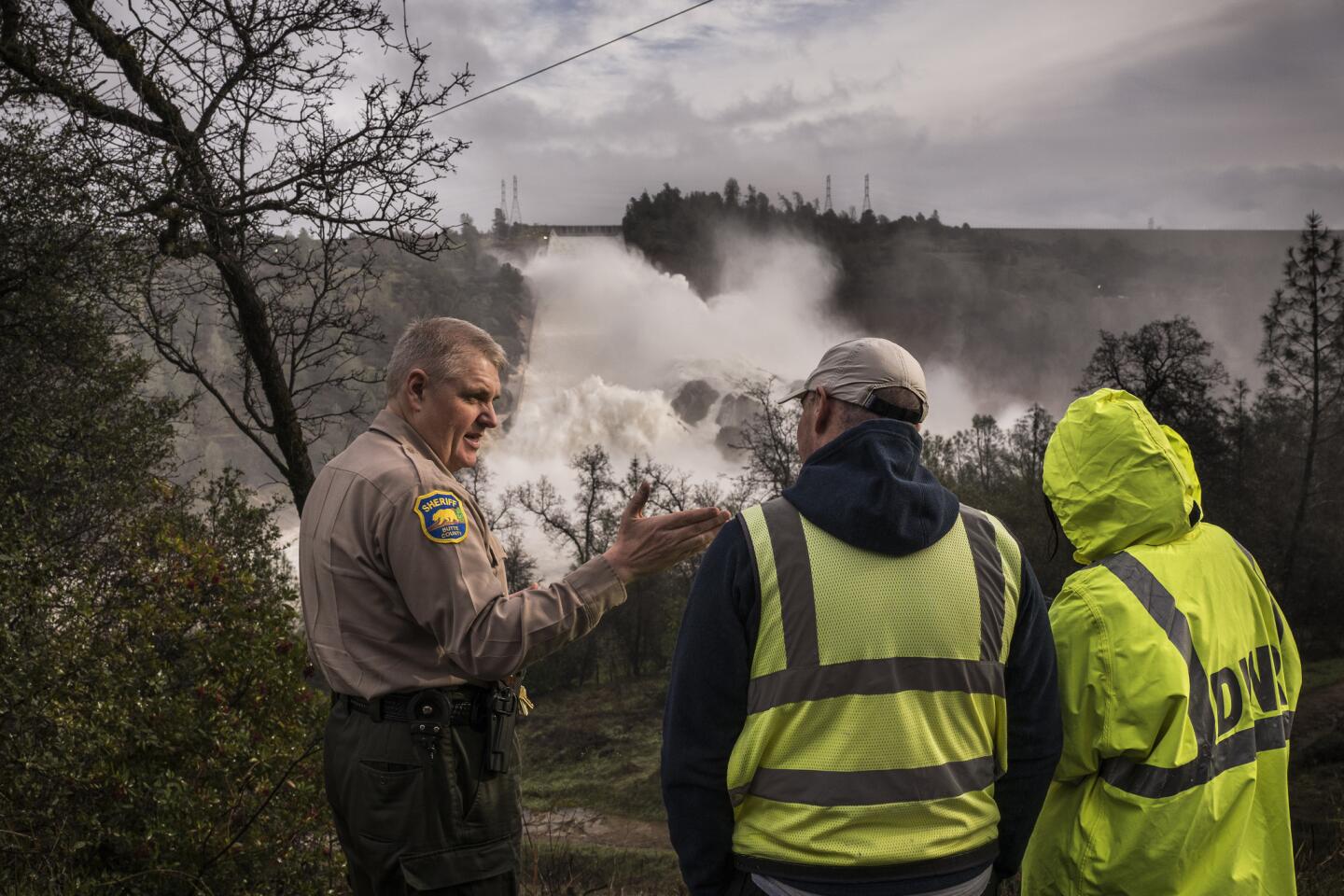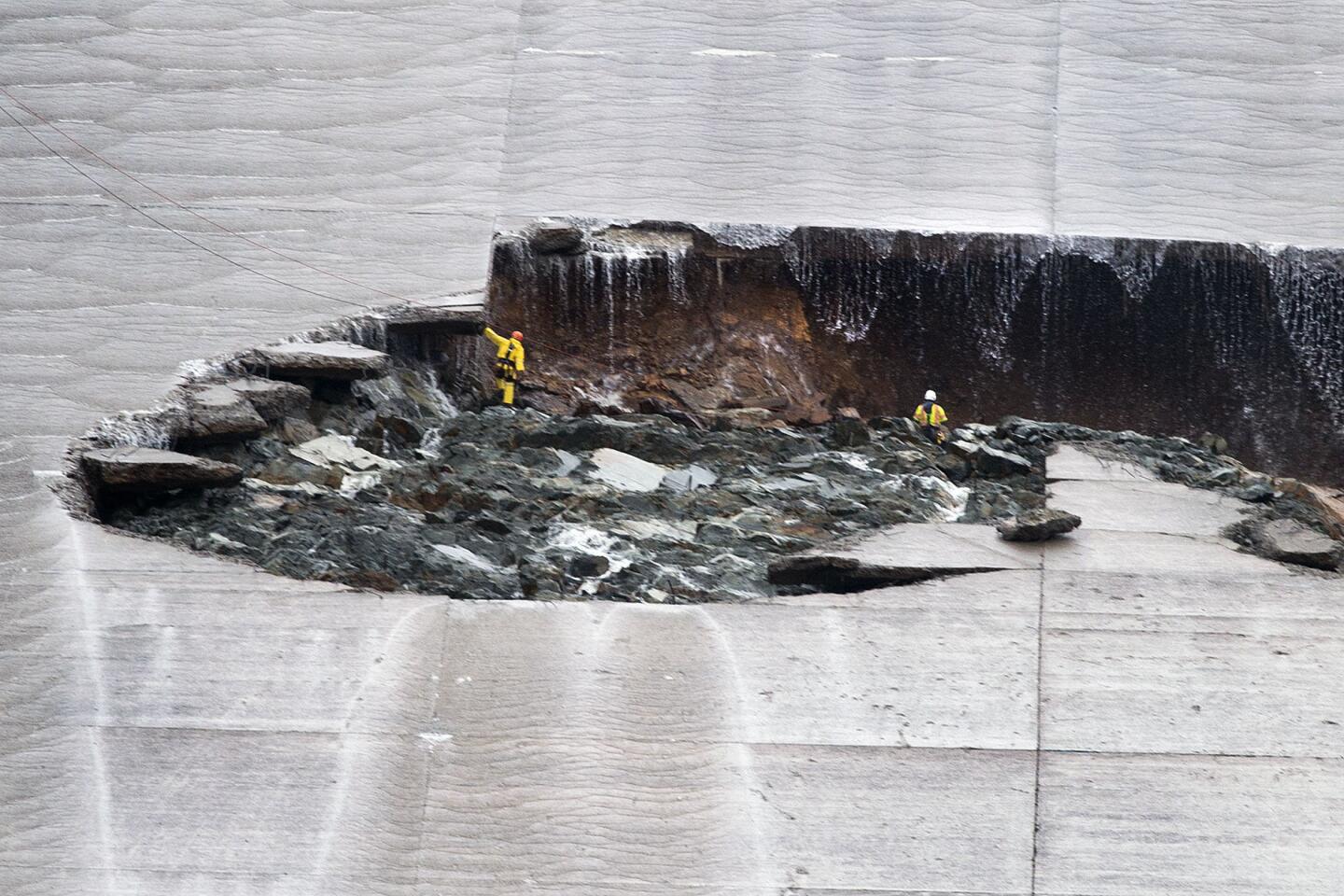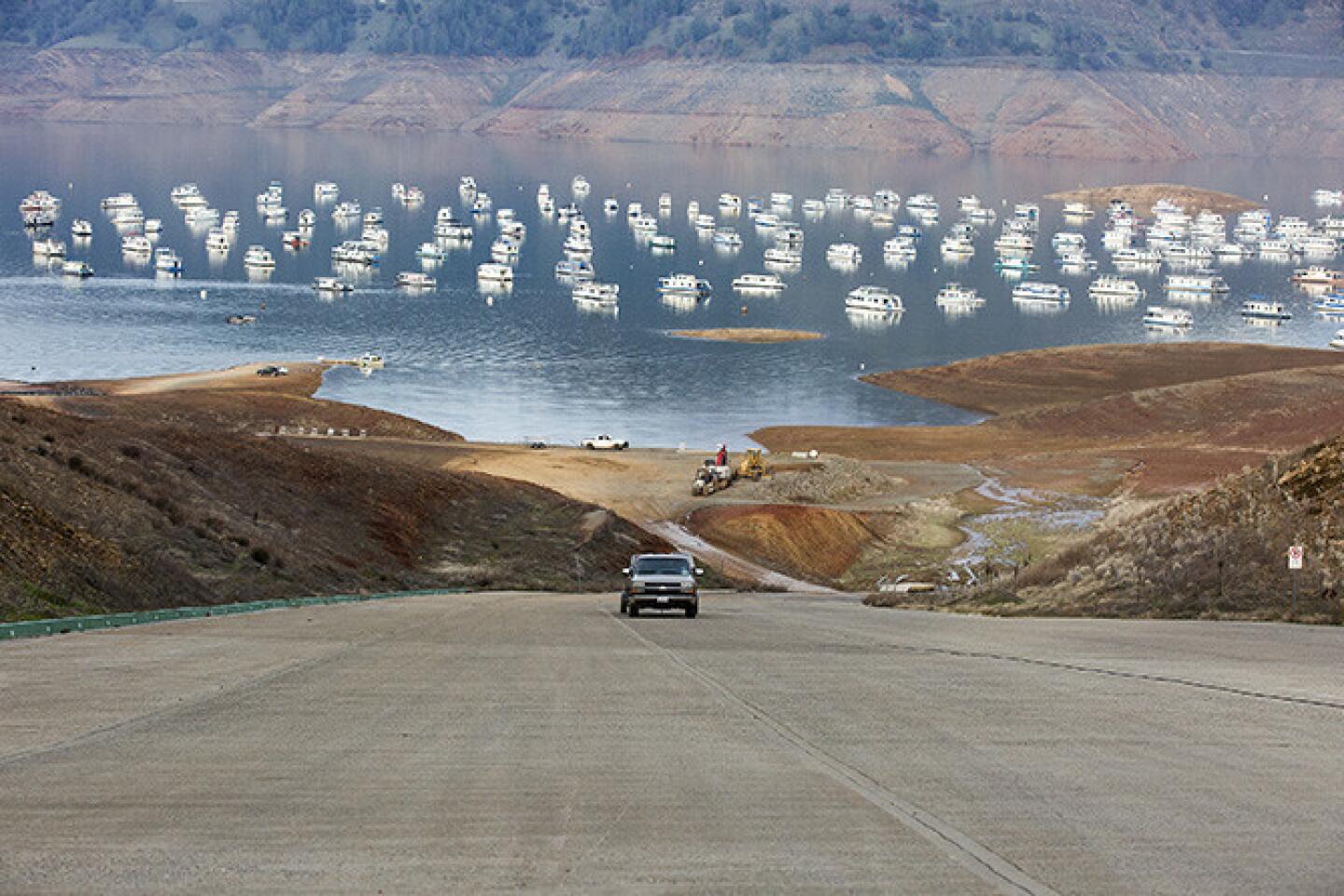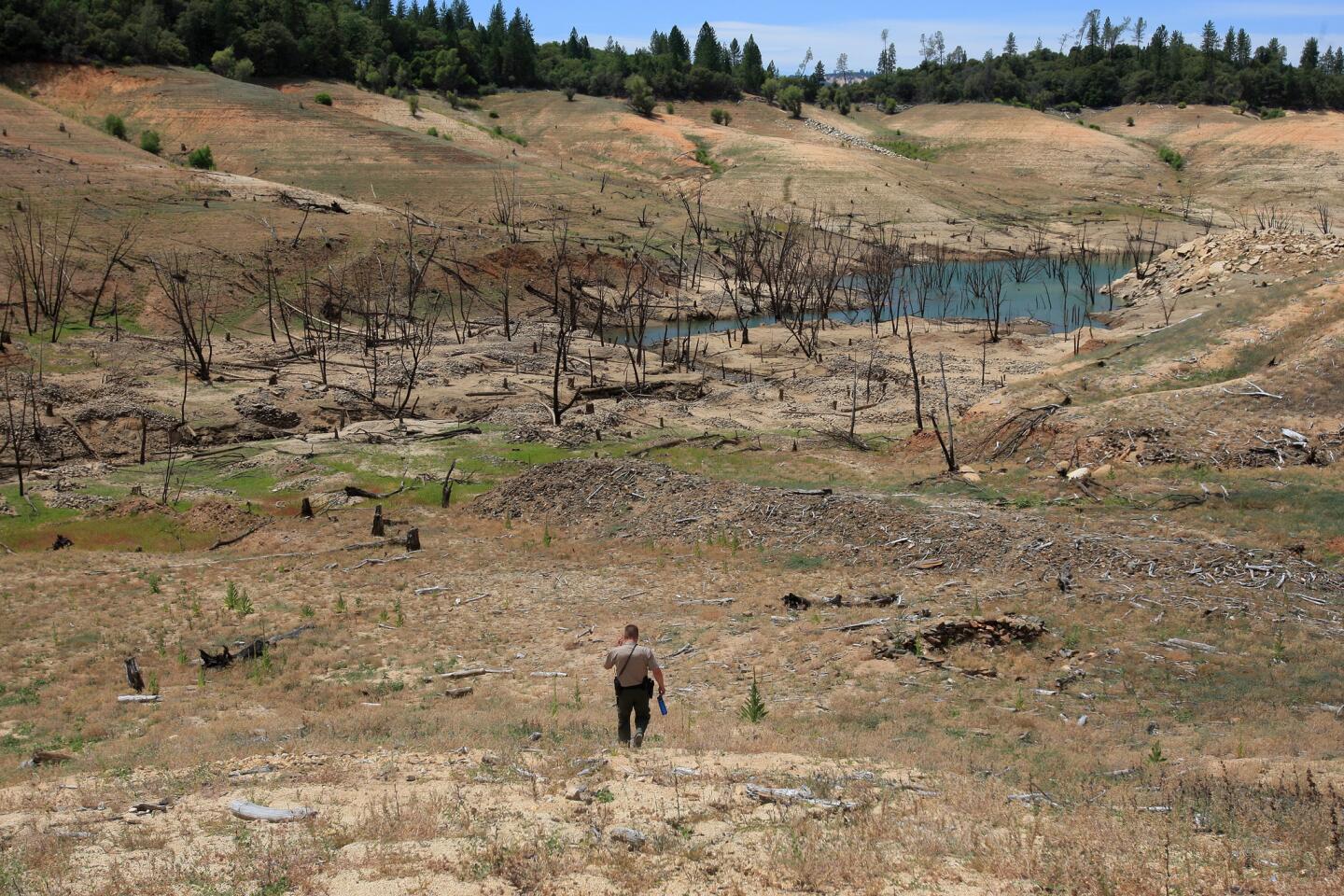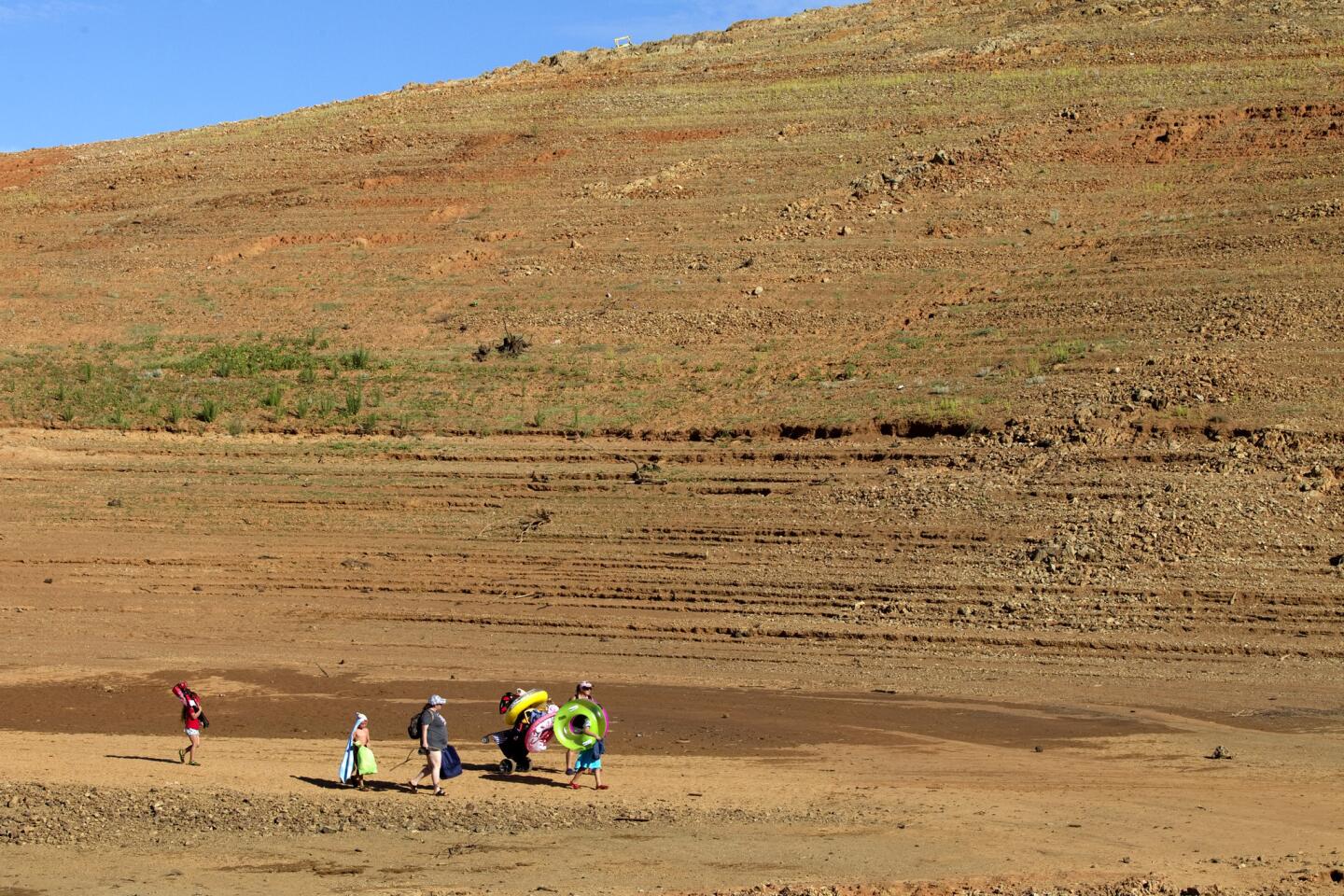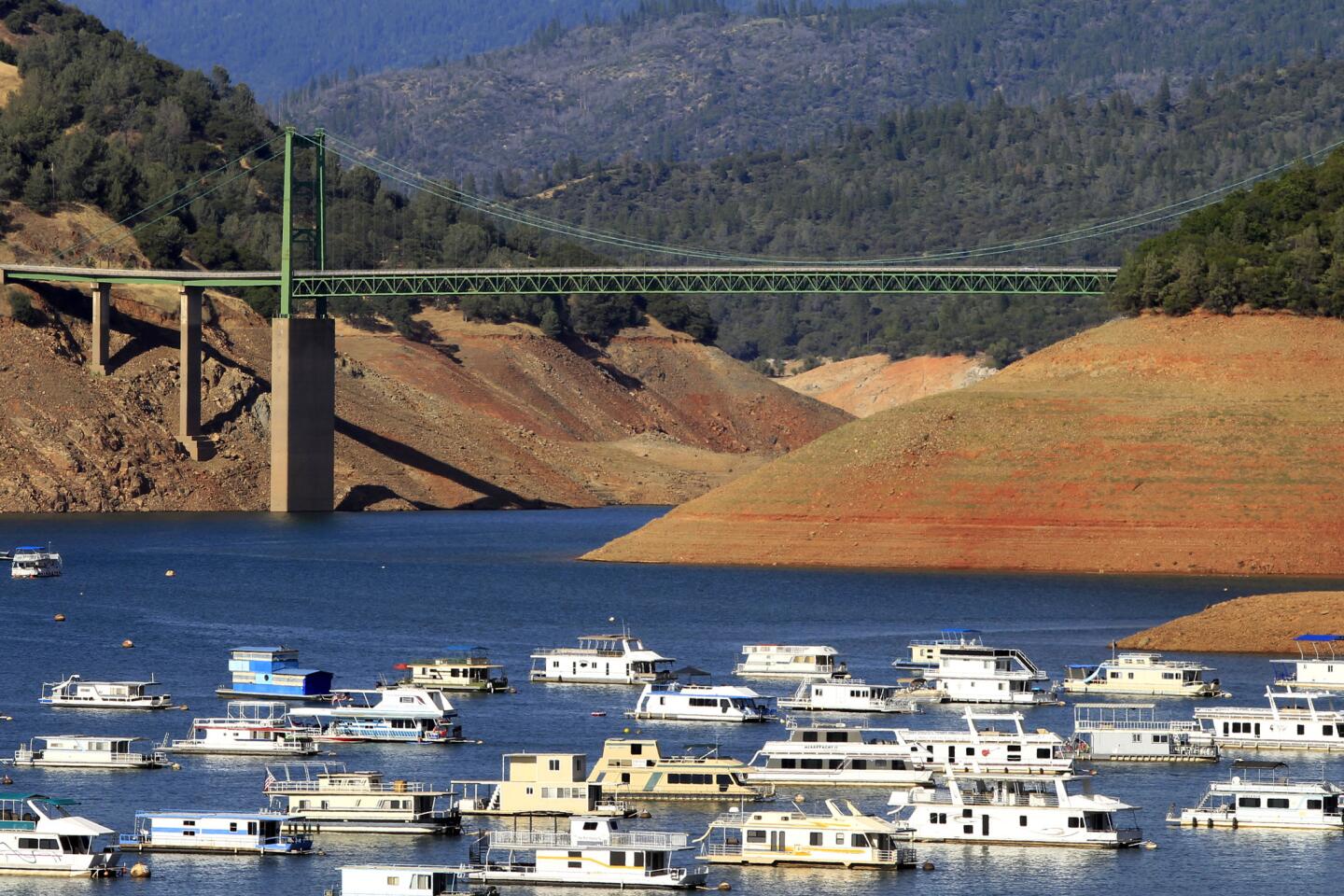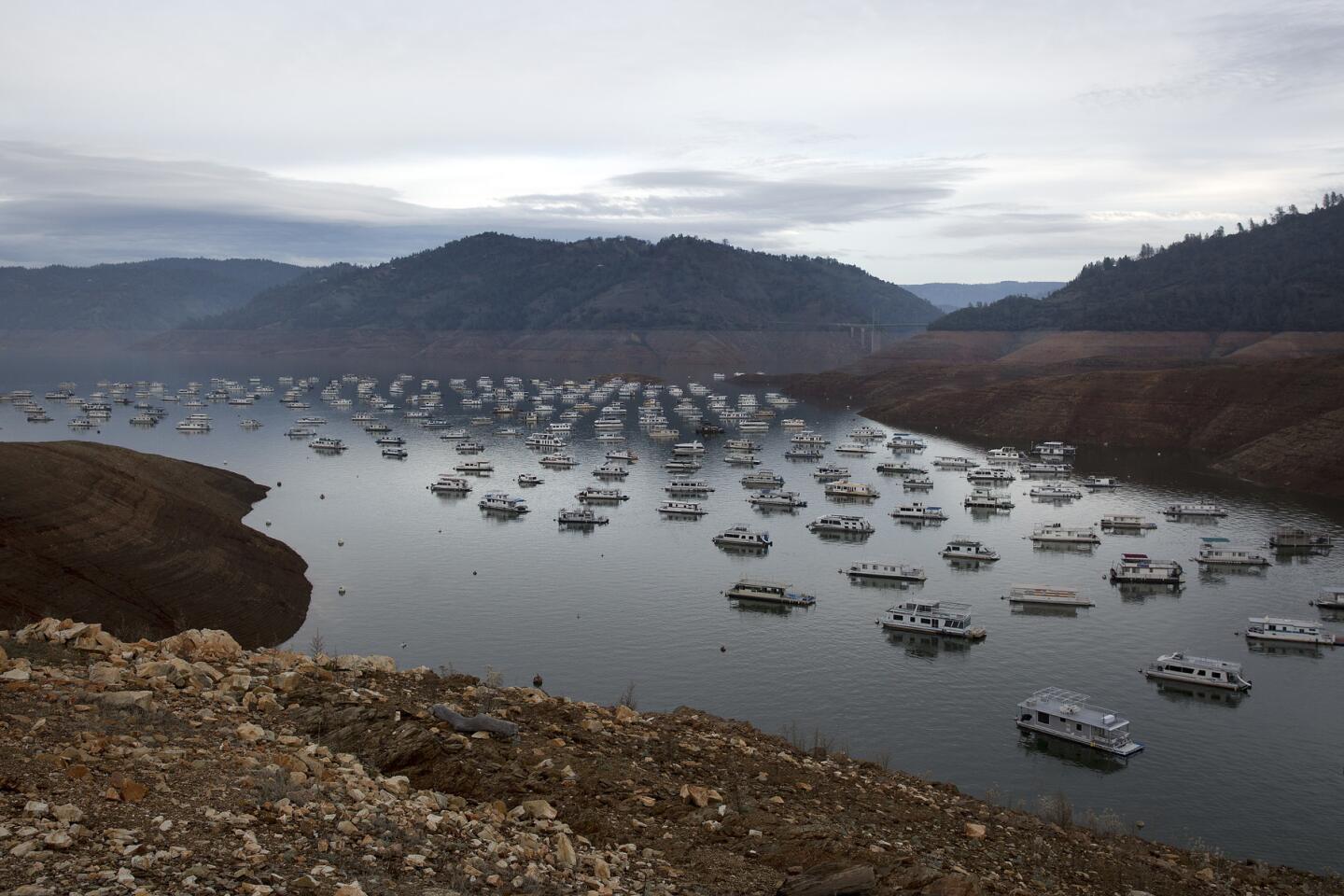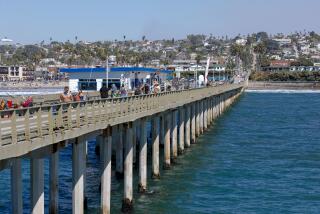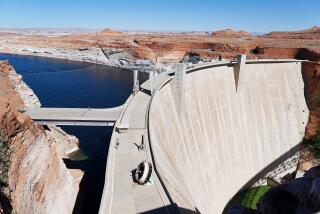Design flaws, construction shortcomings and maintenance errors caused the Oroville Dam spillway to break apart in February, according to an independent analysis by Robert Bea for the Center for Catastrophic Risk Management at UC Berkeley.
Bea, a co-founder of the center and retired civil engineering professor, found that in the 1960s, when the dam was being planned, designers did not call for a thick enough concrete spillway floor. Nor did they require the continuous steel reinforcement needed to keep its slabs intact during decades of service.
For the record:
7:21 a.m. Nov. 15, 2024A previous version of this article referred to the Center for Catastrophic Risk Analysis. Its name is the Center for Catastrophic Risk Management at UC Berkeley.
The design also did not require strong enough anchors into the underlying mountainside to resist movements downhill and from side to side.
The analysis is the first major assessment of what caused the massive damage that forced the evacuation of nearby Oroville and left the state with a repair bill likely to reach into the hundreds of millions of dollars.
It also sends a warning that the state’s aging fleet of dams may contain unknown defects that would threaten public safety in future wet years.
California Department of Water Resources spokeswoman Erin Mellon said the agency has not seen Bea’s analysis.
The Federal Energy Regulatory Commission, which has oversight of the Oroville Dam, ordered the department to conduct an official investigation and last month a panel of six experts appointed by the DWR began work.
“We anticipate that their findings will be of interest to dam owners around the world,” Mellon said. “Their investigation is open-ended, and they have a great deal of complex information to analyze. The forensics team is expected to give DWR a plan and schedule soon.”
Bea, a member of the National Academy of Engineering, was a pioneer in engineering risk analysis during his days as a Shell Oil Co. vice president, overseeing offshore platforms in the Gulf of Mexico. He later helped conduct independent investigations into the New Orleans levee system that failed during Hurricane Katrina in 2005.
Bea’s Oroville analysis is based on original design drawings, which he obtained in the days after the spillway began to break apart, annual inspection reports and photos taken before and after the failure.
After the failure, state and federal regulators clamped tight restrictions on the information, citing national security concerns.
The spillway is a key part of the dam, allowing large discharges of water when the reservoir is nearly full. It began failing on Feb. 7 when dam operators opened gates that sent 55,000 cubic feet of water roaring out of the reservoir after days of continuous rain drenched the Feather River watershed.
The damage occurred at just a fraction of the spillway’s designed capacity of 300,000 cubic feet per second.
A second, higher spillway provides for emergency releases, but until February, operators had never used it..
After runoff damaged the main spillway, they shut it down and sent water flowing over the emergency spillway, but a massive section of mountainside quickly began eroding upward toward a weir that holds back 30 vertical feet of water.
Authorities ordered more than 100,000 people below the dam to evacuate during the crisis. The event forced dam operators to again use the main spillway, which then suffered additional damage.
Bea’s research found that the failure point occurred about a third of the way down the spillway, at an embedded clay drain pipe. .
The slab is 15 inches thick in most places, but the pipe is 6 inches in diameter and the bell housing at the end of the pipe is 10.4 inches in diameter, meaning that over the pipe the slab was just 4 to 6 inches thick — not much better than a common sidewalk, Bea said.
“The spillway failed at its weakest point,” he said.
1/66
An aerial view of the water flowing out of the Oroville Dam main spillway, in Oroville, Calif., on Tuesday, February 21, 2017.
(Marcus Yam / Los Angeles Times) 2/66
An aerial view of the water flowing out of the Oroville Dam’s main spillway on Feb. 21. (Marcus Yam / Los Angeles Times)
3/66
Reduced water releases at the Oroville Dam have made damage to its main spillway more visible. (Marcus Yam / Los Angeles Times)
4/66
With a reduced flow on Sunday, most of the water being released from the Oroville Dam is not going down the spillway; it has broken through and is flowing down the hillside. (Marcus Yam / Los Angeles Times)
5/66
With a reduced flow on Sunday, most of the water being released from the Oroville Dam is not going down the spillway, it’s broken through and is going down the hillside.
(Marcus Yam / Los Angeles Times) 6/66
With a reduced flow on Sunday, most of the water being released from the Oroville Dam is not going down the spillway, it’s broken through and is going down the hillside.
(Marcus Yam / Los Angeles Times) 7/66
Juan Alvarez reassures his girlfriend, Sarah Hendrix, after helping her move out of her home in rural Maxwell. Water was a foot high and crews had to evacuate 100 people because of flooding-- some by boat.
(Marcus Yam / Los Angeles Times) 8/66
Ron Chambers lets Duke out of his crate for the first time in hours since the flooding began n Maxwell, Calif. on Saturday.
(Marcus Yam / Los Angeles Times) 9/66
Kevin Anfinson and other volunteers help shovel the muddy sediment that has built up in the salmon raceway at the Feather River Fish Hatchery in Oroville, Calif. (Marcus Yam / Los Angeles Times)
10/66
Fernando Martinez and his mother, not pictured, wade through a road in Gridley, Calif., flooded by the Feather River as it continues to swell from the water being let out of Lake Oroville.
(Marcus Yam / Los Angeles Times) 11/66
A man in a 4x4 truck turns around on Gridley Road after having second thoughts about making it across the flooded road, which had been closed.
(Brian van der Brug / Los Angeles Times) 12/66
Randy Boheim packs up his tools and emergency supplies in anticipation of having to evacuate his whole family as floodwaters creep closer to his home in an Oroville, Calif., mobile home park. The nearby Feather River continued to swell from the water being let out of Lake Oroville ahead of this weekend’s storm.
(Marcus Yam / Los Angeles Times) 13/66
A plantation in Oroville, Calif., sits in floodwaters as the Feather River continues to swell from the water being let out of Lake Oroville ahead of this weekend’s storm.
(Marcus Yam / Los Angeles Times) 14/66
Helicopters ferry sand and rocks to the Oroville Dam’s emergency spillway reconstruction project in Oroville, Calif., ahead of coming rains.
(Brian van der Brug / Los Angeles Times) 15/66
California Water Service district manager Toni Ruggle surveys the Feather River at Bedrock Park downstream from the Oroville Dam.
(Brian van der Brug / Los Angeles Times) 16/66
McKenna Harvey, 9, left, Kylie Atteberry, 11, and Brooklyn Atteberry, 7, hold signs thanking workers in the repair effort at the Oroville Dam.
(Brian van der Brug / Los Angeles Times) 17/66
A helicopter flies over as water flows from the main spillway at Lake Oroville. (Marcus Yam / Los Angeles Times)
18/66
Reconstruction continues in a race to shore up the emergency spillway at Oroville Dam. (Brian van der Brug / Los Angeles Times)
19/66
As rain clouds gather, friends from left, Johnny Eroh, Cody Balmer, Kristien Bravo and Jerel Bruhn hang out by the flooded Feather river in the Bedrock neighborhood of Oroville, Calif., last week. (Marcus Yam / Los Angeles Times)
20/66
Evacuees at the Bangor Community Hall in Bangor, Calif., listen to Butte County sheriff’s deputies in February as the mandatory evacuation order was lifted. An evacuation advisory was lifted Wednesday. (Brian van der Brug / Los Angeles Times)
21/66
Evacuees at the Bangor Community Hall get the news from Butte County sheriff’s Deputy Jeff Heath that the evacuation order has been lifted.
(Brian van der Brug / Los Angeles Times) 22/66
Evacuee Sharon Dalton, right, hugs Raiden Ellis, 10 months, and Chris Ellis as they say their goodbyes as she leaves the Bangor Community Hall in Bangor, Calif., on Tuesday.
(Brian van der Brug / Los Angeles Times) 23/66
David McGlamery returns to his Oroville home with his belongings after the evacuation order was lifted. The family had to retreat to Chico, where they initially stayed at a Walmart parking lot with other evacuees. (Marcus Yam / Los Angeles Times)
24/66
Bill Tirey helps family members move back into their home in the Bedrock neighborhood of Oroville near the Feather River after evacuation orders were lifted.
(Marcus Yam / Los Angeles Times) 25/66
Maria Alancar returns home to greets her pet pig Bacon, who was left behind when the family moved to higher ground in Honcut, Calif.
(Brian van der Brug / Los Angeles Times) 26/66
Sulet Lopez, 21, left, Melissa Mendoza, 3, and Yeanet Lopez, 18, pack up their car at the Bangor Community Hall in Bangor, Calif., to head home after the evacuation order was lifted.
(Brian van der Brug / Los Angeles Times) 27/66
Erica Stenholm, left, Ronnie Vaughan, and Brooklyn Jackson, 7, unpack their car upon returning home after the evacuation order had been lifted in Oroville.
(Marcus Yam / Los Angeles Times) 28/66
Jonah Avina, left, and his wife, Eileen, pray before lunch at the Maranatha Mennonite Fellowship in Bangor, Calif., on Tuesday. The Bangor-area Mennonites are hosting several immigrant families evacuated from the nearby town of Honcut.
(Brian van der Brug / Los Angeles Times) 29/66
Evacuee Estafani Reynoso, left, colors with Mennonite children at the Maranatha Mennonite Fellowship in Bangor, Calif.
(Brian van der Brug / Los Angeles Times) 30/66
Crews work on a damaged section of the emergency spillway at Lake Oroville on Monday. (Josh Edelson / AFP/ Getty Images)
31/66
An Oroville property is flooded on Monday as thousands were under evactuation orders.
(Josh Edelson / AFP/Getty Images) 32/66
The Marysville cemetery underwater along the Feather River.
(Marcus Yam / Los Angeles Times) 33/66
Nirmal Singh, a Sikh priest, conducts a morning prayer ritual as evacuees sleep in the background at the Shri Guru Ravidass, a Sikh temple that has opened its doors for evacuees of the Oroville Dam crisis in Rio Linda, Calif.
(Marcus Yam / Los Angeles Times) 34/66
Kamlesh Nahar, far left, talks to fellow evacuees at the Shri Guru Ravidass Temple.
(Marcus Yam / Los Angeles Times) 35/66
Maria Lopez reads on her smartphone as she spends a second night in her father’s car in the parking lot of the Bangor Community Hall.
(Brian van der Brug / Los Angeles Times) 36/66
Sharon Dalton finds a quiet spot under a table as she spends a second night with her dog Cruiser inside the Bangor Community Hall.
(Brian van der Brug / Los Angeles Times) 37/66
Verna Chadwick and 10-month-old son Raiden Ellis during a second night in the Bangor Community Hall.
(Brian van der Brug / Los Angeles Times) 38/66
The emergency spillway, left, and the damaged main spillway at Lake Oroville are seen in an aerial photo Monday.
(Elijah Nouvelage / Getty Images) 39/66
A dump truck crosses the primary spillway to deliver boulders to the damaged emergency spillway at Lake Oroville on Monday evening.
(Brian van der Brug / Los Angeles Times) 40/66
Helicopters place large rocks on the damaged emergency spillway at Lake Oroville on Monday evening.
(Brian van der Brug / Los Angeles Times) 41/66
Around-the-clock monitoring continues on the damaged primary spillway at Lake Oroville on Monday evening.
(Brian van der Brug / Los Angeles Times) 42/66
Water rushes down a spillway at the Oroville Dam. (Brian van der Brug / Los Angeles Times)
43/66
California Department of Fish and Game wardens view the damaged spillway on Monday. (Brian van der Brug / Los Angeles Times)
44/66
Bill O’Kelley, 86, and wife Doris O’Kelley, 84, of Oroville sit near a flagpole Monday at the Silver Dollar Fairgrounds evacuation center in Chico, Calif.
(Brian van der Brug / Los Angeles Times) 45/66
Coua Tha, of Oroville prepares a meal for her family in the parking lot at the Silver Dollar Fairgrounds evacuation center in Chico, Calif.
(Brian van der Brug / Los Angeles Times) 46/66
Desiree Garcia and daughter Kay’lee Pearl Garcia, 3, of Oroville look over donated clothing Monday at the Silver Dollar Fairgrounds evacuation center in Chico, Calif.
(Brian van der Brug / Los Angeles Times) 47/66
Members of Oroville’s Jordan Crossing Mission pray with a volunteer service member Monday at the Silver Dollar Fairgrounds evacuation shelter in Chico, Calif.
(Brian van der Brug / Los Angeles Times) 48/66
The swollen Feather River flows through Oroville, Calif., on Monday.
(Rich Pedroncelli / Associated Press) 49/66
A building is submerged in Riverbend Park as more water is released from Lake Oroville.
(JOSH EDELSON / AFP) 50/66
Siblings Zach Soto, 11, left, and Gabby Soto, 13, keep an eye on the Feather River along a railroad bridge in Oroville, Calif., on Monday. The family decided to stay in Oroville as they live on high ground near downtown.
(Brian van der Brug / Los Angeles Times) 51/66
Water flows down the damaged main spillway of the Oroville Dam at 55,000 cubic feet per second into the Feather River. (Brian van der Brug / Los Angeles Times)
52/66
Water from Lake Oroville flows down the damaged main spillway.
(Brian van der Brug / Los Angeles Times) 53/66
Water from Lake Oroville flows down the emergency spillway of the Oroville Dam toward the Feather River.
(Brian van der Brug / Los Angeles Times) 54/66
Pacific Gas & Electric crews aided by a helicopter removed transmission lines and insulators from towers standing in the bed of the emergency spillway of Lake Oroville.
(Brian van der Brug / Los Angeles Times) 55/66
A rainbow appears over Feather River as water cascades down the damaged spillway at Lake Oroville Dam.
(Brian van der Brug / Los Angeles Times) 56/66
Water cascades down the spillway below Oroville Dam. The water is being released by authorities to avoid flooding at Lake Oroville because of recent heavy rain. (David Butow / For The Times)
57/66
Pacific Gas and Electric Co. crews move two electric transmission line towers on the bank of Feather River as a precaution if the Lake Oroville Dam emergency spillway needs to be used.
(Brian van der Brug / Los Angeles Times) 58/66
A California Highway Patrol cruiser patrols Lake Oroville Dam, which is closed to the public due to the damaged spillway.
(Brian van der Brug / Los Angeles Times) 59/66
Water cascades down the spillway below the Oroville dam. The water is being released by authorities to ease flooding in Lake Oroville because of recent heavy rain.
(David Butow / For the Times) 60/66
Butte Country Sheriff Kory L. Honea speaks with department of water and power workers at an overlook as the observe runoff from the Oroville Dam.
(David Butow / For the Times) 61/66
Water trickles down as workers inspect part of the Lake Oroville spillway failure in Oroville, Calif.
(Randy Pench / Associated Press) 62/66
A boat launch at Bidwell Canyon is still hundreds of yards above the current lake level on Jan. 21, 2016.
(Brian van der Brug / Los Angeles Times) 63/66
California State Park Ranger Bryan Taylor searches for signs of disturbance or theft as California’s severe drought conditions are revealing historic artifacts at Lake Oroville, June 21, 2014.
(Allen J. Schaben / Los Angeles Times) 64/66
Severe drought conditions are evident as a family treks across a long path back to their car at Lake Oroville, June 21, 2014.
(Allen J. Schaben / Los Angeles Times) 65/66
Houseboats are dwarfed by steep banks that show the water level down 160 feet from the high water mark at the Bidwell Bar Suspension Bridge over Lake Oroville on June 21, 2014.
(Allen J. Schaben / Los Angeles Times) 66/66
Houseboats at Bidwell Canyon Marina at Lake Oroville, January 21, 2016.
(Brian van der Brug / Los Angeles Times) The drains play an important function in protecting the spillway. Massive amounts of water move through the ground underneath the spillway, exerting tremendous uplifting force, known as hydraulic jacking.
An important factor in the failure was that the drain near the failure point was likely plugged by roots growing from nearby trees and shrubs, based on photos that show no water exiting the drain outlet along the spillway’s vertical wall.
If the drain was plugged, then the spillway was being uplifted by a force of 1,000 pounds per square foot and pounded on the top by raging waters, Bea said.
The failure point also appears to be near a drain line that was repaired in 2013, meaning that the area could have been degrading for years. Bea said the repairs involved patching cracks and fissures with concrete, which provided little strength to resist the forces that it would bear.
“It would disintegrate like potato chips under these hydraulic forces,” Bea said.
But even if the drains were working properly, they would not have prevented the failure, Bea said.
The spillway is constructed in approximately 40 foot sections along its width, but the sections are not tied together with a continuous string of reinforcing steel, according to original design drawings in the Bea report. Only a short steel dowel connects each section, not enough to keep the structure intact under very high forces that would occur when large amounts of water are flowing.
The Bea report shows that the spillway handled 129,000 cubic feet of water per second in the late 1990s, but since then it has been used for relatively minor discharges in most years. The lack of use likely concealed years of deterioration that was weakening the structure, he said.
The DWR website said the agency is assessing a repair and replacement plan to prepare the spillway for action by Nov. 1.
The agency has received bids from three contractors for repairs, ranging from $275 million to $344 million, well above the state’s expectations. Late Monday, DWR said that Kiewit Corp. of Omaha was awarded a $275-million contract to make the repairs.
Since the failure, state and federal officials have taken inspection reports and design documents offline and refused public information requests for their disclosure. Bea said that in his view institutions are attempting to protect themselves from criticism.
The technical problems in the spillway should call into question the adequacy of the dam itself and the adequacy of about 20 other California dams built in the same time period, he said.
“Good risk management would dictate that we should look at all the dams of that era,” Bea said. “This is not an Oroville problem. It is a state problem and a national problem.”
[email protected]
Follow me on Twitter @rvartabedian
ALSO
Candidate’s endorsement ‘contract’ with a former rival draws complaints in L.A. City Council race
L.A. County seeks to strengthen the safety net for its neediest residents with funding for the homeless, social workers and healthcare
Comedian Katt Williams ordered to complete anger management classes in Beverly Hills robbery case
UPDATES:
10:10 p.m.: This article has been updated with information about a repair contract being awarded to a contractor.
This article was originally published at 7:20 p.m.
